
Бесплатный фрагмент - Attila Kagan of the Huns from the kind of Velsung
Knowledge is power
Foreword and Problem Statement
How does the history of Russia relate to the history of the Huns? And Russia directly correlates, as a community of peoples, and as a state entity, is a continuous and direct continuation of the Hunnic community of peoples, and probably the state, because the peoples of Russia, and not only Russia, but also Europe before the Rhine were part of the Hunnic Confederation. It should be shown here that the peoples of the Baltic region have lived here since ancient times, and were well acquainted with each other, which Edda proves, telling not only about svej and dans, but also about the Huns and lands of Gardarika.
How is Gardaric translated literally? The land of kings, the land of rulers, or rather TSARGRAD, from Garda-country, and Rica — royal, Riksdag-literally royal council, that is, the translation of Gardarik — the land of cities, this is an incorrect translation. Thus, repeatedly mentioned in the annals and writings of Constantinople, this is Gardarika. Reigned this land, according to Edda, the dynasty of the Sirgles. What are the Finns calling Russia now? Venaya, and the Russians are called venelainen. Estonians call Russia Venemeia, and the Russians are also veneline. Wenedos, on the other hand, met in antiquity from Asia Minor, where Quintus Curtius Ruf refers to them, to Italy, the province of Venetia. In modern Germany, Lusatian Serbs are called sorbians or Wends, and in official legal acts. But the Slavs do not call them, that is, the term Slav is very late, and has a Romance origin, and was artificial. What does he mean? Obviously, this is a religious symbol. Slavic champion of the glorious, high way. But a German, a German? The word consists of two parts, the hera (Here. Herr) is glorious, high, whence the name of souls in Wallgalle-Einheria, and hence the conversion in Germany — Herr or Nere in Denmark, means — Glorious. Parallels in the Old Russian language are glorious, glorious, so refer to young men and women in Russian That is, the words German and Slav are synonyms, and funny as it may be, verbatim Germany and Slovenia are also synonymous. Sweden is called either Schwerig or Svearik, that is, either the kingdom of Svej, or the path of the Oath (swear-oath), the name itself is scary and demanding, and Norway is Norway (Norway) or Norge, which translates as the northern path. As evidenced by cross-translation, North is the north, way is the way. Germany in Swedish, Tuskland, and in Finnish Sax. So, the neighbors are well aware of the neighbors. The present territory of Russia was called in those distant times, according to the testimony of Saxon Grammatik, Olaf Dalin, the Swedish historian of the 18th century., Venland, and before that as Hunigard, that is, the country of the Huns, and the Russian North Saxon Grammatik calls Gandvik, in the translation “Gantt Bay”, that is, most likely, he speaks of the Gulf of Ob, the Yamal Peninsula, where Khanty and Mansi are known to live but the Danish historian calls the inhabitants of that land giants, and the stories about this northern land were full of legends and mysteries, these testimonies speak of the enormous wealth of these places, and that these extraordinary people live on islands in the northern seas and that they all living in these mysterious months ah, they are sorcerers. Living folk tradition in all of Finland and some parts of Karelia attributes the affiliation, in some places to the still remaining grave stone piles and mounds, to the unknown Nephite people, who inhabited all of Finland, northern Scandinavia and even Karelia in the present territories of the Kem and Olonets provinces. The Finnish name for this ancient people is Hiji. Saxon the Grammar tells the story of one expedition of Gorm: “… Having reached Gandvik (Bay of the Gulf of Ob, Khanty’s country) and pulling the ships ashore, Gorm and his sailors camped. At dusk, a man of extraordinary size appeared to them, calling himself Godmund.” Travelers soon saw a settlement “more like a smoky cloud.” Entering one of the premises, “they were amazed at the abundant treasures and various jewels and saw seven barrels encircled by seven gold hoops and hung with silver chains of numerous rings, a bull horn of unusual size, trimmed with precious stones and covered with art engraving and, finally, a solid weight bracelet”. They were especially surprised to see “weapons intended in magnitude to some superhuman beings.” And the Scandinavian sailors could not resist, there was not enough willpower and even a sense of self-preservation did not help this time, and the abundance and availability of jewelry. And most were very unlucky, many were “torn to pieces by monsters, and only twenty people were saved, who returned home with Gorn at the head.” Numerous finds of archaeologists confirm the most terrible stories of Saxon Grammatik — the inhabitants of the North, Volga region and Don region firmly believed that the dead could come to life, and to protect themselves, the feet and hands were cut off from the dead, and such manipulations are unknown anywhere else, and the sorcerers of these peoples were considered very strong in their craft. Such rites of neutralization of the dead are not known in other states and among other tribes of Europe and Asia. And this rite occurs on this territory at the beginning of the third millennium BC, in the Bronze Age. Further, Russia, in China, in our Asian neighbor, is called Elos, and so many Indo-European states were called in antiquity — this is the ancient Elam and the Greek name for itself is Hellas.
Lobed-type temporal rings, scaphoid-shaped scoops, and blackened ceramics, and volute (double spiral) in jewelry and art
Also interesting are the peculiar rings, called temporal lobular rings, the number of lobes from two to six. Temporal rings were made on the basis of findings from gold and silver. It is interesting to show a two-lobed ring from Treasure Schliemann. Catalog Inventory number Aar132, Bz50, P92 F6014 and Aar 133 Bz49, P91 A 6015. Two-lobed ring from gold from the State Historical Museum collection (Historical Museum). Photo dsc00946. These findings only confirm Taylor’s theory of the promotion of shepherd tribes in Asia Minor and Greece. The find is dated to the beginning of the second millennium BC. e.
Now let’s turn to the finds of the Abashevskaya and Andronovskaya culture. They developed in the forest-steppe zone of Eastern Europe whose monuments are found from the left bank of the Dnieper in the west to the Tobol river. It is dated by the beginning of the middle of 2 thousand. BC. You can also see the use of the meander pattern in the decoration of vessels, as well as dicotyledonous temporal gold rings. In the Urals, in the peat bogs, wooden ladles with a swan figure were found
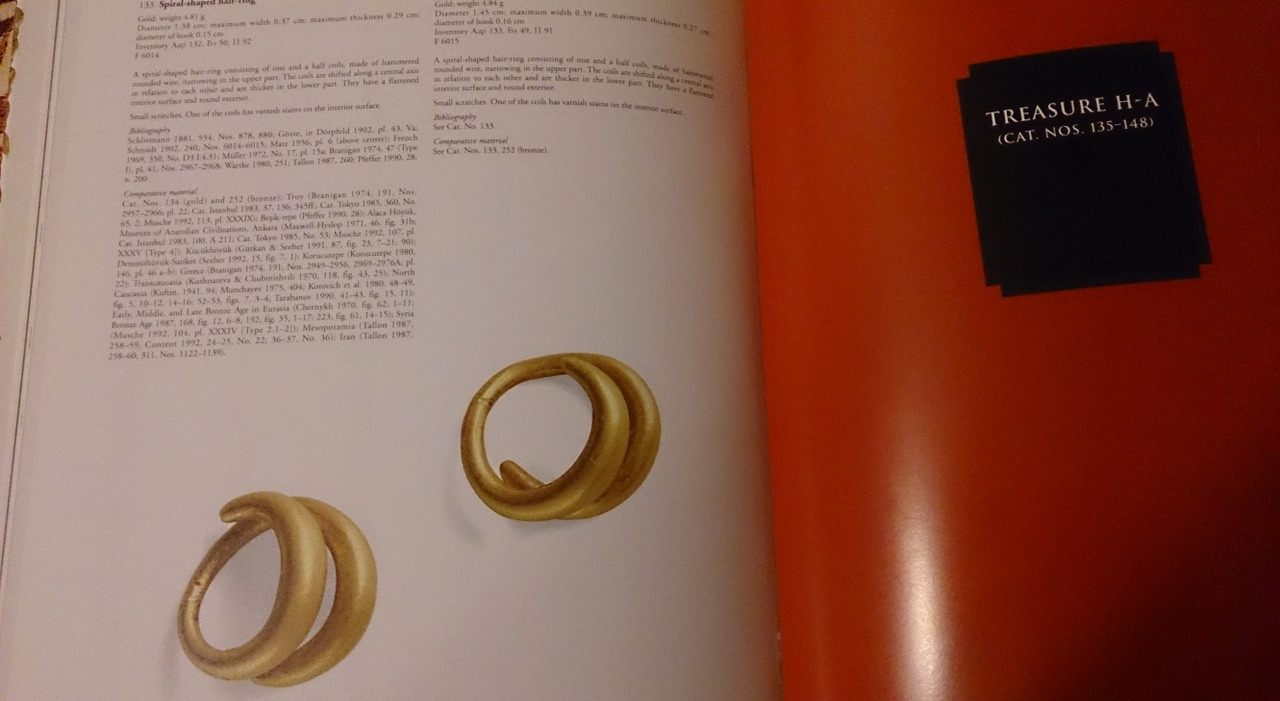
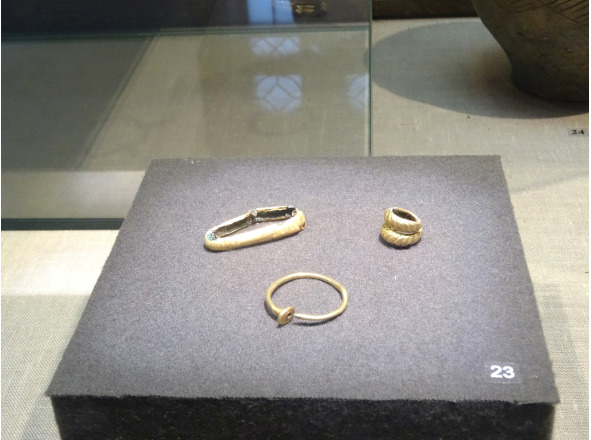
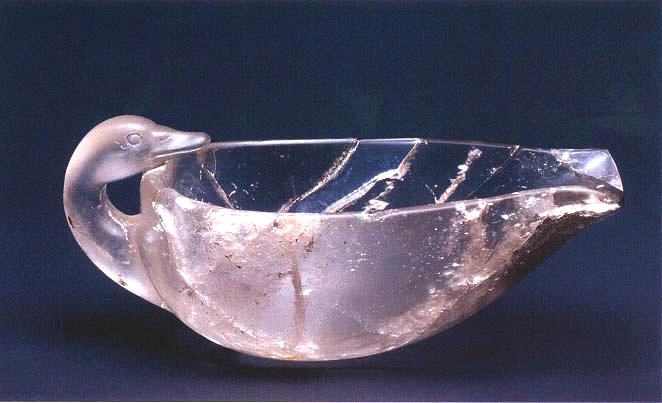
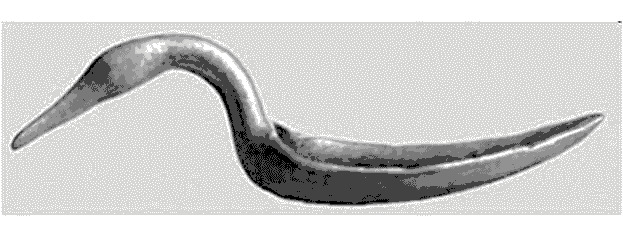
A find in Greece is very interesting, a crystal bucket with a handle in the shape of a duck’s head was found in Mycenae, dated to the 15th century. BC. The work is, of course, extremely difficult, how could the master make such a fragile thing, because it is not cast and has not been blown out of glass? But the shape of this magnificent object copies wood products found in the distant Urals. Wooden ladles were later found in the Scythian burials already in the Iron Age, as evidenced by numerous finds. The culture of using ladles in everyday life was preserved in Russia until the 20th century, now these wooden objects are used as decorative dishes. That is, this ritual dish can be used as a kind of indicator of Indo-European culture.
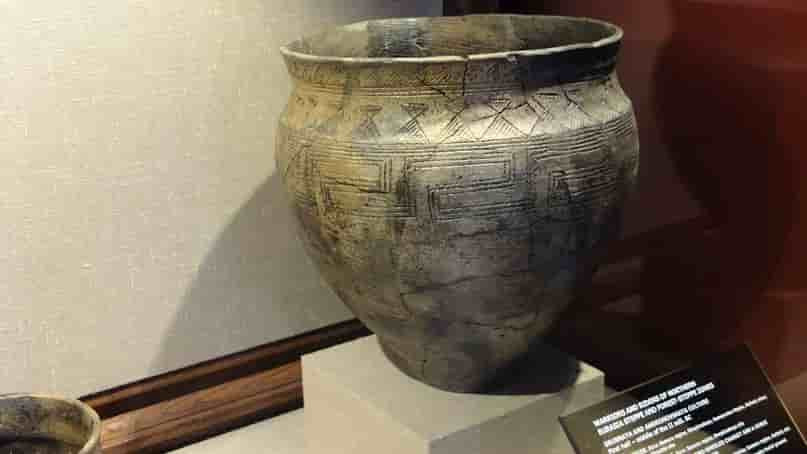
Blackened and ground milk ceramics appear among artifacts of the pit and catacomb cultures in the middle of the 3rd millennium BC. A method of manufacturing black-glazed ceramics was discovered in the vast past. By whom and when it is now impossible to establish. It is known that the Etruscans (VIII — II centuries BC) already had a technology for the manufacture of black-glazed ceramics. Black-glazed household utensils were widely distributed in Russia, the peak of its popularity occurred in the period from the 3rd to the 19th centuries. The method is quite simple — the ceramics are smoothed out, then the products are fired in a smoking flame without oxygen (staining). Milk milk is a very mouth-watering formulation and one of the most popular methods of fire decoration. The bottom line is the following — the sintered shard (past the unit kiln) is placed in milk, and then baked again at a lower temperature (about 300°C). And this utensil has been seen among the finds dating back to the 3rd millennium BC. and at present in the basin of the Volga and Don rivers, and the steppes of the Black Sea region, and Trans-Urals. Similar ceramics were discovered by Schliemann and Taylor during archaeological excavations in Troy and Hellas, and similar dishes were found in Crete and date back to the beginning of the third millennium BC. Significant can be called bracelets, pins, wands with the image of volute (double helix). These findings are widespread, and open bracelets with volutes are one of the hallmarks of these cultures.
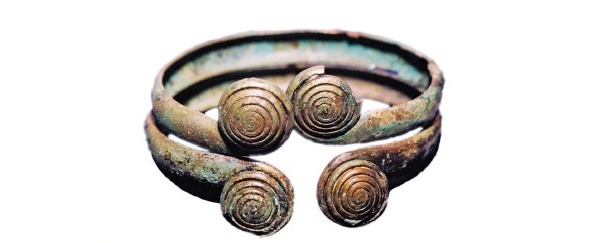
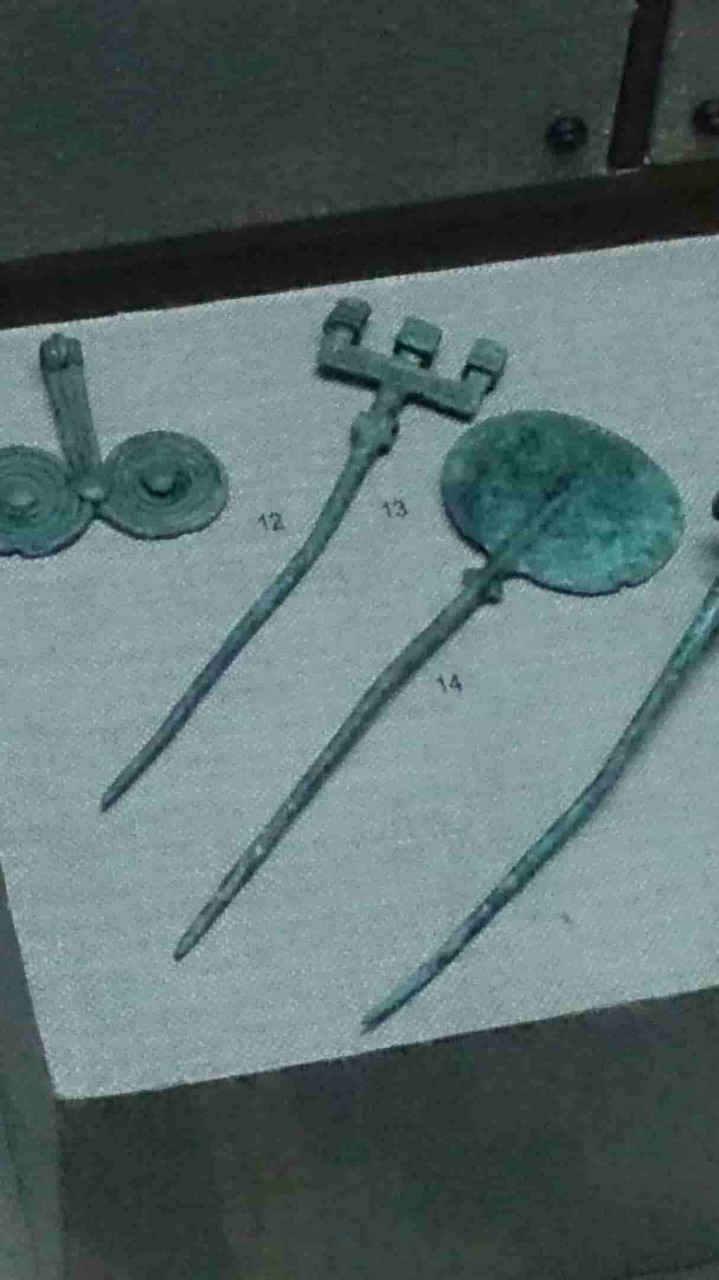
Giant growth of the Huns
Huns-Hans, but it is the real, ethnic Huns. and not members of the union of tribes who embraced the Hunnic culture, was characterized by extremely high growth. According to the finds of the Tarim mummies belonging to the Andronovo culture, they grew to 200 cm. Mummies were discovered in 1939. Bergman, and the most impressive finds in China were 1980s goals, where he managed to find well-preserved remains on display at the Urumqi Museum.
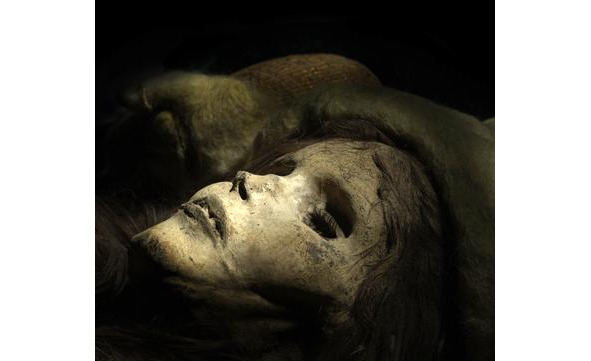
All the legends about the giants of Greece speak of the extremely high growth of these heroes, in Germany they are called giants by the Huns (Huns), and the Burgundians, part of the Huns, also had gigantic growth according to the letters of the Romans. Savirs-northerners-northerners of Novgorod-Seversky Zemly reached a height of 180 cm.
The closest to Andronovites were representatives of the European culture of cord ceramics and Sintashta culture, as well as modern Indian populations, according to a study by Keyser C. et al. “Ancient DNA provides new insights into the history of south Siberian Kurgan people.”
Bashlyk
Bashlyk (tur. Başlık — headgear) — a pointed pointed hood worn in bad weather over any headgear to protect “from the cold, rain and sunshine.”
But, however, this type of headdress BASHLIK first appears among the Andronovites of China. And the Andronovites were not Türks. In men, judging by the findings of the Tarim mummies, these are caps that differ in their sharp tip.
Further, a similar type of headdress appears among the priestesses of Crete, and here undoubtedly the influence of the Huns-Hans
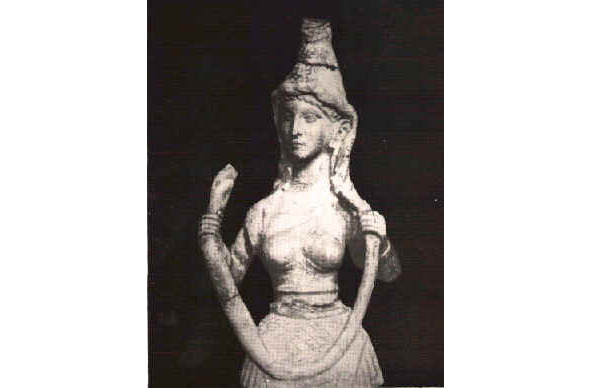
The figurine is made of ivory, on the head is a Scythian hat.
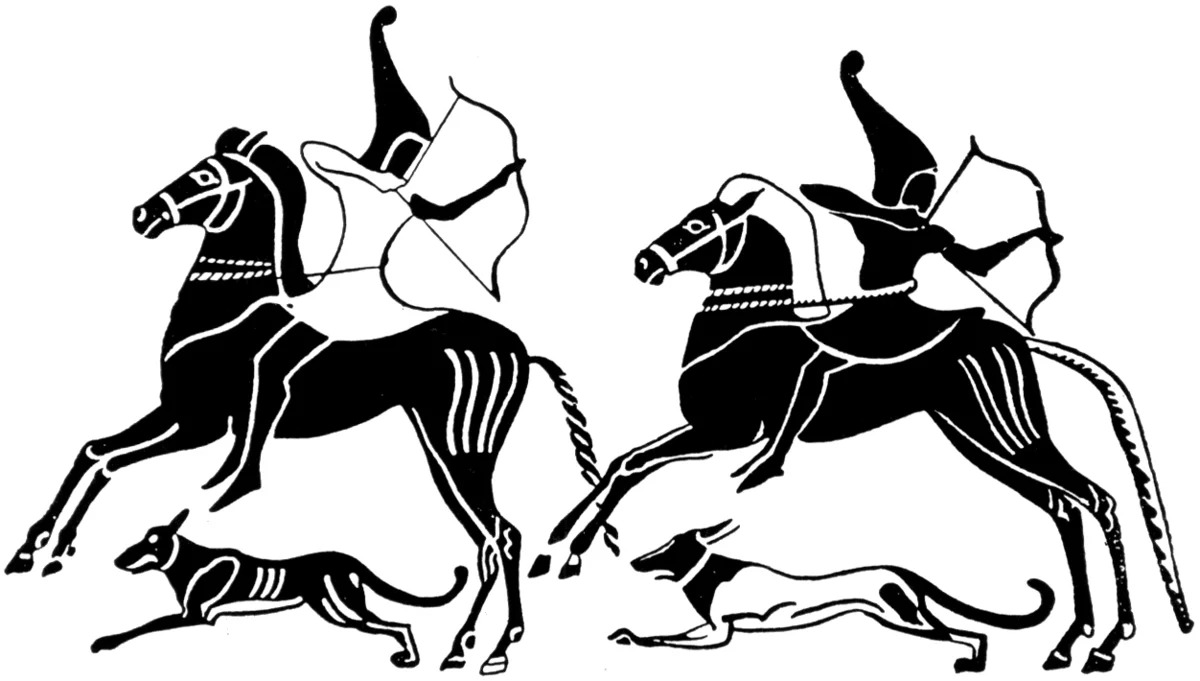
Further, a similar headdress is depicted among the Cimmerians and Scythians. As you can see, this is a pointed hat, with blades for wrapping the neck, such a hat-scarf of the past. Thus, bashlyk is the cultural heritage of the peoples of Russia, and unfortunately, there is no proper attention to this headdress in terms of promotion on the market for the purpose of sale, as well as to the shirt-shirt. Especially since the headband is more than 4000 years old, and it deserves attention. Similar scarfs are in Estonia and Sweden. But in the case of a hat, a scarf is another design — not the blades are wound around the neck, but the laying of the knitted construction of the garment.
Farn is considered a power
Farn is considered a power, or deity, which is interpreted as the material embodiment of the life-giving power of the Sun, divine fire, a divine essence that brings wealth, power and power. Often Farn appears both as a kind of abstract sacred good idea, and as a concrete material symbol, a divine character. Usually in mythology, Farn has common attributes with food, which is often indicated in the Iranian languages by the same word or its derivatives. For example, the mention of this name is found in the performance of the modern traditional Ossetian feast ritual — in one of the toasts, pronounced in strict sequence, an appeal to “Farn of the Universe” follows with a request for the granting of happiness. Sometimes Farn acts as a good spirit — the keeper of the hearth. In some cases, Farn is understood as happiness, a share, fate, that is, in this sense it is comparable with the similar gods of Greek and Roman mythology — Tiche, Fortune. Farn often appears as a symbol of royal power.
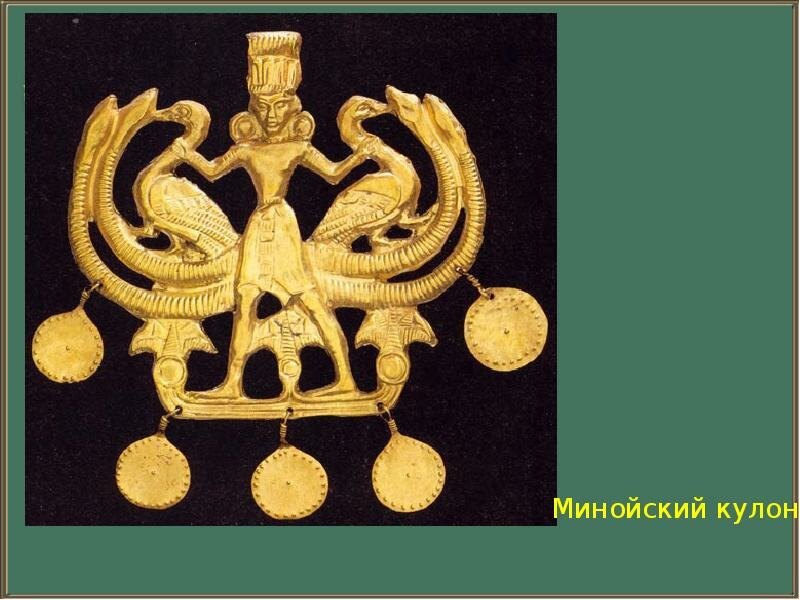
But if simpler, it was this sacred animal that carried the soul of the deceased to the land of ancestors, or the land of the gods, the other world. As an example, Aries of Gella (Ella), here it is similar to Sarasvati, in which there was an aries and a swan. The ram image as a symbol of Farn was widely distributed in the Kushan kingdom, Sogd and Bactria.
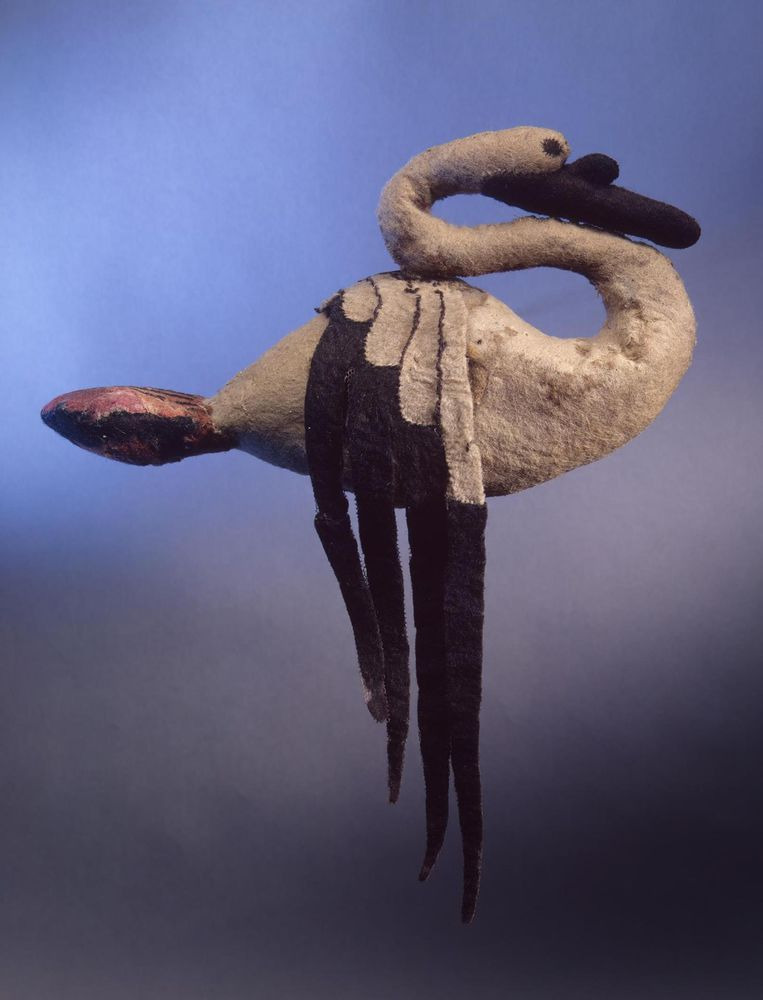
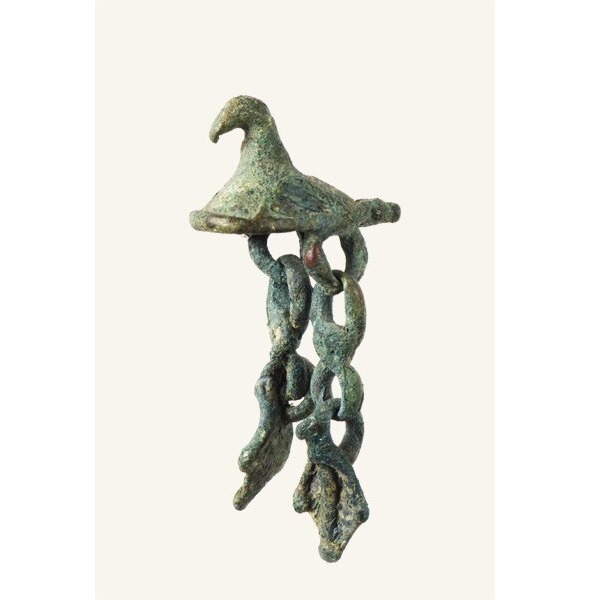
In the graves of the sacks farn swan
In the graves of Scythians and Sarmatians there are numerous finds of geese-swans, and later on the Volga, such figures were hung from bracelets worn on the deceased
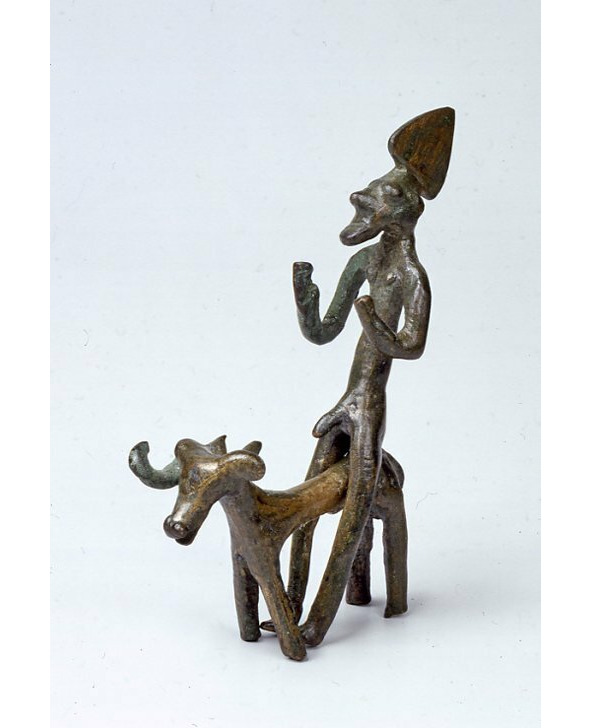
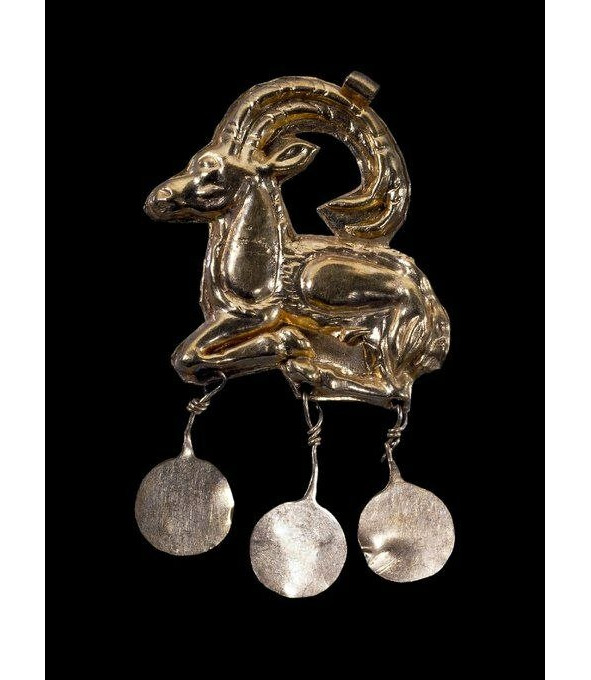
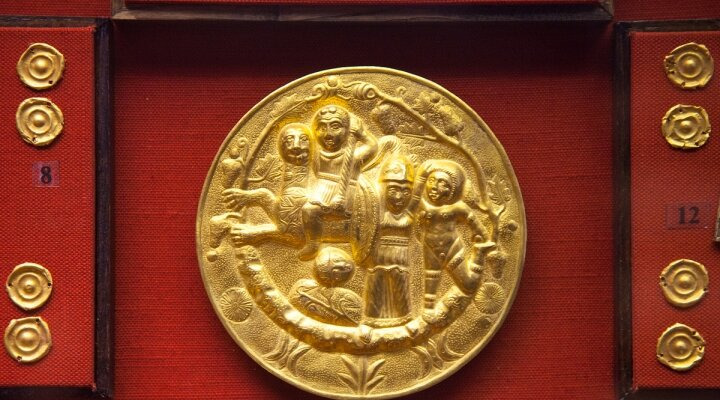
Wahana (to sit down, ride something”) — in Indian mythology — an object, a fictional creature or animal used by the gods as a means of transportation (usually a mount). Mounted animals can be either real or mythical, or a mixture of both types. Wahana is a manifestation of the brute energy of the deity, its totem is a symbol of the deity, indistinguishable from whose mount it is (Nandi, the bull, the wahana of Shiva, personifies power, etc.). Wahans, in addition, increase the power of their masters (Durga could not defeat the demon Mahishasura without the help of her wahana — the lion Manashthala) and denote evil forces and vices that are commanded or suppressed by the deity (Skanda, whose wahana is a peacock, has power over vanity.
That is, there is a possibility that the Aryans received the name from their sacred animal Aries (ram), and the Huns (Hans) from their farna, goose (Hans).
Huns-gans (geese). Tales, tales of geese, as the sacred animals of this people
Abashevskaya and Andronovskaya cultures, undoubtedly connected and being the culture of the Hans-Huns, began to develop in the Ob River basin, from where they spread up to Hellas and Denmark, China and India, but most of the people of this culture remained in the vastness of Eurasia, leaving the foundation of the present people of Russia.
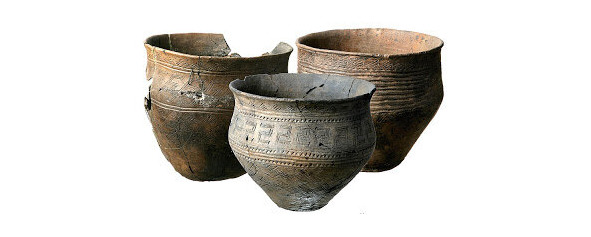
The cult animal, along with the bear, was the goose-swan, mentioned in the tales of the Russian people inextricably. However, similar, even more likely, identical tales are observed in Pomerania and Denmark and Sweden, where the Huns-Hans reached the Bronze Age.
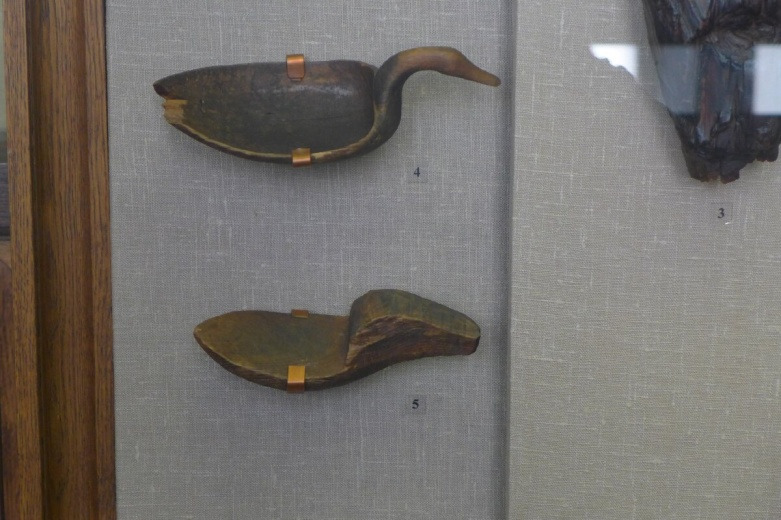
The name of this tribe itself is associated with a goose, because in German it is Hans-goose. And it is natural that tales and legends with a goose are numerous-Geese-Swans appear in many tales. But earlier, the goose was the subject of a cult — this animal, as in the myths of Apollo, who was also a native of the North, carried the soul of the deceased to the Land of the Dead. This is evidenced by the numerous statuettes of these birds in the graves of Scythians, Sarmatians and Huns. But in the Bronze Age, geese were depicted schematically, in the form of a meander.
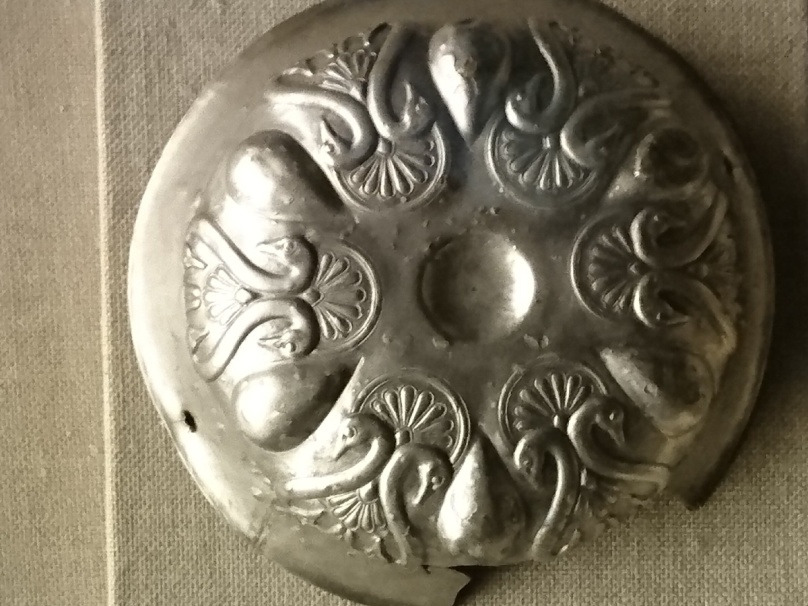
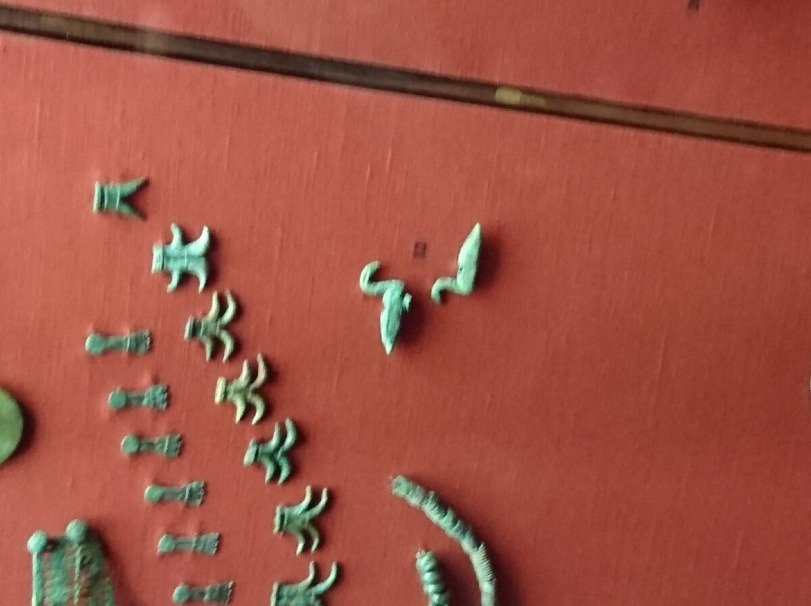
The Saks from Altai, the Sarmatians, also accompanied the goose in the afterlife. Obviously, judging by the tales, he had to fly away with the soul of the deceased to his ancestral home, the distant North. In Moksha, Gus-matzi, -hh, the latter is close to the word HUNT.
Among the Saks, the swan was also a sacred creature, whose function was to deliver the soul of the deceased to the afterlife. Recall the team of Apollo swans.
Extra evidence that the Huns-Hans reached Hellas in the third millennium is also proved by the goose-swan cult associated with the cult of Apollo and Artemis.
Among the many living attributes of Apollo, the swan rightfully occupies the main place. The popularity of the Apollo and Swans motif has been attested throughout antiquity. This beautiful proud bird accompanies the divine twins Apollo and Artemis “the most beautiful inter-glorious descendants of Uranus” (Hes. Theog., 920). Sometimes a “golden Aphrodite” or her tomboy Eros appears on a swan (and more often on a goose, judging by a vase), but this is already late Hellenism).
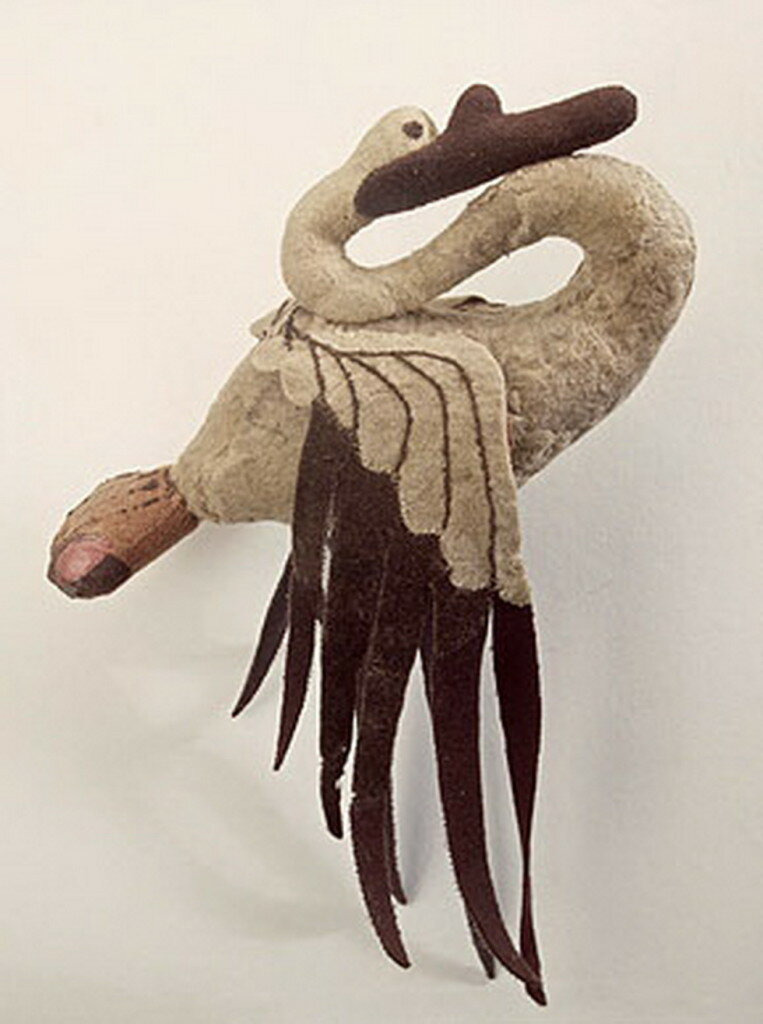
Poets and philosophers often call the swan the bird of Apollo (H. h., XXI. 1 sq; Sapph. Frg. 147b, Plato, Phed., 85b.), “The vocal singer of God”, “the most melodious of birds” (Call. Hymn., II, 5; IV, 249), “the favorite of the muses” (Eur. Ipphig. T., 1103—1105), “the Pythian and Delosian” (Aristoph. Av., 870). “The long-necked joy of Apollo” calls the swan Bacchillides (Dyph., 16). The motive of the “swan song” was not known in antiquity; Homer, Hesiod, and also in Homeric hymns do not have it. On the contrary, the swan in the sacred places of Apollo constantly sings, glorifying the birth of God on Delos (Call., II, 250–254), or portending his appearance (II, 5; Aristoph. Av., 769–770), or singing in the land of Hyperboreans hymns during the rites. According to Elian (De nat. An., XI, 1), at that time clouds of swans flocked from the Riphean mountains, “they fly around the temple, as if cleansing it with their flight,” and then gracefully sit on the fence of the temple, “representing a sight majestic in multitude and beauty. “When the singers begin to praise God accompanied by the citharists, “then the swans together join in singing and in no way do they sing awkwardly or inaccurately”, masterfully performing a melody, like experienced singers, led by a choreographer. And all day long, “the aforementioned feathered singers collectively glorify and glorify God.”
Belief in the living, evil dead, silver weapons against them
There are extremely interesting exhibits in the State Historical Museum, these are the silver tips of copies from the Borodino treasure, and obviously, the more ancient silver tips belonging to the Seima-Turbino Culture.
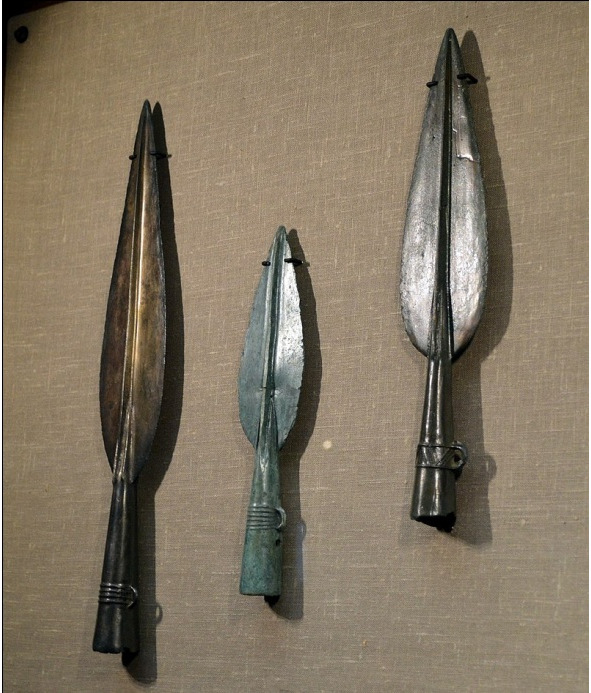
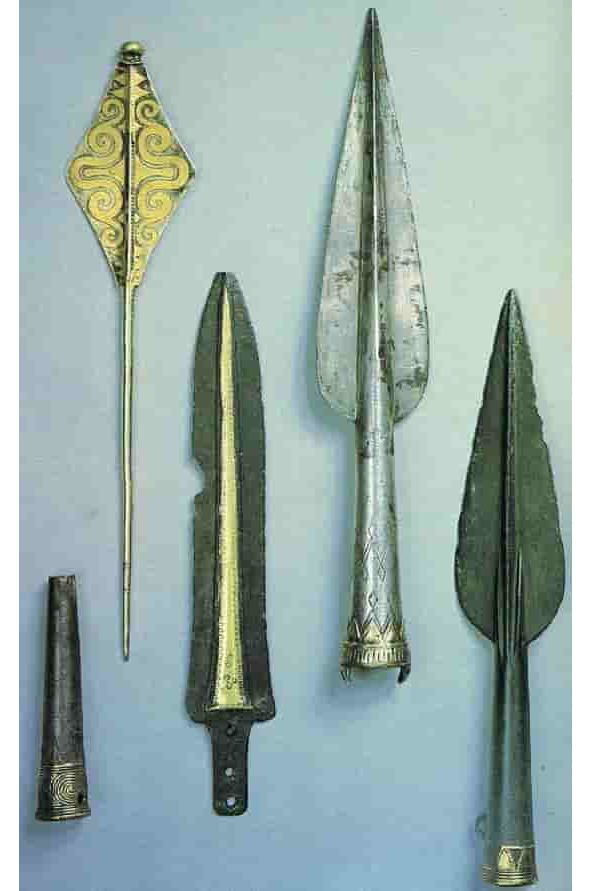
The detachments of warriors with silver spears are mentioned by Arrian at Alexander the Great and are called argyraspids, from argyr — silver, and speyra-spear, to call them silver-cut is a clear mistake. A detachment of soldiers with silver spears was also owned by the Persian king, according to the testimony of Quintus Curtius Rufus. “Behind the chariot were 10 thousand spearmen with richly decorated silver spears.” The squires of Moscow’s grand dukes and tsars — the market men — were remembered by all foreign guests of the Kremlin. During the ceremonial receptions of foreign ambassadors, they stood on both sides of the royal throne, dressed in ceremonial clothes, with silver hatchets. And here, too, silver weapons, and everything somehow coincides, one to one. If we recall the property of silver, which was considered important in antiquity, to drive away or kill evil spirits.
This is the custom of neutralizing the dead, known only in the Ciscaucasia and the Volga and Don basin. The dissected burials of the Bronze Age are known in the burial mounds of the pit and catacomb cultures. At the same time, they do not form a single chronological layer, often their dating is complicated by the lack of inventory. Often, the practice of dismembering two buried, buried in one pit. The specific forms of manifestation of the ritual of dismemberment of bones could vary, which can be explained by different motives of dismemberment. But, despite this, common to all options is that such a practice has never been applied to all members of the community and has always been unique. There are two types of dissections, each of which has its own motivation:
Type I — dismemberment caused by necrophobia, rather the desire to render harmless the dead, and to make safe his dead body, which already had no relation to the dead person, that is, the soul. And in later eras, the Indo-Europeans did not sign the graves of the dead, did not put any plates with the names of the dead, even the famous royal burial sites of Macedonia were depersonalized, in contrast to the Athenian burials of the same era. The corpse was dismembered, or mutilated, designed to “render harmless” the deceased. You can recall the belief, already widespread in the historical era, that a vampire can be killed with a stake pierced in his heart or cut off his head, but it can also be killed with silver weapons. Both phenomena have the same motivation. In the Bronze Age, such a dismemberment could probably be subjected to mentally ill or worshipers, priests, sorcerers, fortune tellers. The ritual was intended to deprive the powerful dead man of sacred power. Type 2 — dismemberment of the victim, as atonement for the sins of the organizers of the funeral rite and transfer of the “wrath of the deceased” to the dismembered victim. Either this was used to “alleviate” the suffering of the main deceased or undergo posthumous trials. Type 2 was not used in single burials.
In addition to the Oksko-Sur interfluve, such burials are also known in other territories. But the distribution area of this rite is so great that listing all areas of its existence is very difficult. In addition to the ancient Mordovians, this rite was quite widespread both among Finno-Ugric peoples and beyond. So in the III — IV centuries. the rite of neutralization was known to the Sarmatians (II Akhmerovsky, Salikhovsky burial ground), up to the VII century. it existed among the Turbaslinsky tribes (Dezhnevsky, Turbaslinsky burial grounds), Bakhmutin culture (Birsky burial ground), in the VIII — X centuries. in Saltovo-Mayak culture it is (Mayatsky, Saltovsky, Rubezhansky burial grounds), in the 7th-10th centuries. the rite was present in the graves of Mary (Khotiml burial ground, mounds near Kineshma), in the IX — XI centuries. Vymsk culture, in the XII -XIV centuries. in the monuments of the Makushensky type (Makushensky burial ground), Relkino culture (Relka burial ground), the Udmurts, Rodanovskaya culture, etc. (Matveeva G.I., 2003. S.210—211; Flerov V.S., 1993, 2000a, b; Aksenov V.S., 2002; Finno-Ugric peoples and Balts …, 1987. S.74, 78, 125, 221; Goldina R.D., Kananin V.A., 1989; Shutova N.I., 2001).
All this testifies to the wide distribution of the rite of neutralization of the buried, its evolution in time and the emergence of local features in the population of the Oksko-Sura interfluve..
On the territory of Russia, and it was in the Volga-Don basin, there was a custom of neutralizing sorcerers after death in the 20th century, as it were. In the 1900s, in the Menzelinsky district, at the sorcerer’s funeral, it was customary to put him face down in the grave. In Bogava, the Sviyazhsky district was also laid in this case, the deceased was laid face down, as well as they cut out his heels and stuck aspen against the heart. As everyone understands that, these people did not read at the beginning of the 20th century. “Count Dracula”, and it is natural that these customs have their origin since the Bronze Age.
Historiography
However, in historiography XVIII — 1st floor. XIX centuries, the Huns were considered Mongols. This point of view was first expressed by Pallas, and then supported by Bergman and Thierry. Joseph de Guinse was the first to express the opinion that the Huns could be of Turkic or Proto-Turk origin. English scientist Peter Heather considers the Huns so-called. “The first group of Turks” invading Europe. The Turkish researcher Kemal Jemal sees confirmation of this version in the facts of the similarity of names and names in the Turkic and Hunnic languages. This version is also accepted by the Hungarian researcher Gyula Nemeth. And it is with this erroneous and unacceptable theory that the following presentation conflicts and refutes the ideas of Joseph de Guin, as if based on nothing. Writes about the history of the Huns Alfan Louis. Great empires of barbarians. From the great migration of peoples to the Turkic conquests of the 11th century. Gumilyov’s significant book on the Huns, the book of M. I. Artamonov, “History of the Khazars”, also made a considerable contribution to the study of this problem.
Adam of Bremen writes in the Slavonic Chronicles, “that the Danes called Russia Ostrogard or Hunigard,” that is, the country of the Huns. The Chronicles say that the River Ens was the border between the Huns and the Bavarians, that is, that the Western Slavs were also considered Huns. The Gustrow ode says that the encouragers wrote from the Ob River, that is, they are also Huns, and the Bronze Age mounds in Germany are called the graves of the Huns. Hansa, the medieval trade and political union of the North German cities, is also called the city of Azerbaijan, Ganza, and this area was in the sphere of influence of the Ephtalite Huns. Mavro Orbini speaks of the island of Philopodius, as he writes in his book “Slavic Kingdom,” the Russians from Biarmia discovered it, and it is inhabited by Slavs, and the island is also called New Earth. As you know, this island is located opposite the Yamal Peninsula. The word “Philopodius” in Greek means “holding Love, the basis of Love”, but Love is the quintessence of the divine essence. In favor of the fact that it is Yamal that is the ancestral home of the Huns and all Indo-European peoples, and says all of the following in this book.
The geography of the region from the Volga and the Don to the Danube and the Ob
The Yamnaya culture, which is generally accepted in modern science, is Indo-European, and in international science it is proved that the Indo-Europeans came to Europe from the Ciscaucasia, and specifically the Volga and Don region, and in the Anglo-Saxon passports of the white Europeans are called “Caucasians”, that is, immigrants from Of the Caucasus. The pits were shepherds, but were not nomads, and the structure of food and social wealth was based on cattle breeding and dairy farming.The measure of wealth, in the “Iliad” and “Odyssey” of Homer, and in the Vedas of India was the presence of bulls and cows in the household. Being a shepherd was an honorable and respected occupation, the god Krishna in India is called the Shepherd, Gopal, and his girls “GOPI”, that is, shepherdesses, accompany him. Homer calls Apollo also herding cows on the slopes of Mount Ida, when Apollo and Poseidon built the walls of Troy to King Laomedont. Cattle breeding in itself lays the need for a large amount of water and grass for animals, and therefore the cattle breeders were and are residents of Finland and Russian Pomerania, as well as the Volga and Ural regions, then eat with plenty of water and grass. That is, these cattle breeders naturally tried to occupy lands with a large amount of water, grass, and spread west and south through the basins of full-flowing rivers. And therefore, the appearance of these tribes on the Danube River in the early days, where they are mentioned in the written sources of Ancient Greece and Rome, is quite natural. The toponymy, the names of the settlements on the Danube speaks of this, these are the cities of Staraya Rasa in Serbia and the city of Savaria in Hungary, now called Sambathei (by the way, Sambatei was so called one of the suburbs of Kiev, and Konstantin Bagryanorodny writes about it). So the shepherds penetrated all the rivers suitable for the milk valley, and captured them.
Ancient Huns-Huns
It’s extremely interesting that “Gustrow Ode says that the encouraged people came from the Ob River,
“And the wind drove majestically the waters of the rivers,
So that the Ocean can feel their running
Connecting together the Elbe, Wesel, Ob,
Where the Nereids play in the waves.
From there, our Mecklenburg traveled a long way,
Through the land of Rus to his princess: “Gustrow Ode.
In Germany, giants are called, interestingly, hunami. (in Russian transcription the spelling of “guna” would be more correct, but the “huna” more conveys the German pronunciation). This word is characteristic of continental Germany and Holland and means giant. In addition, there are other words denoting giants, and, as the legend from Pomerania shows above, sometimes this word even required clarification (“giants, which were called huns”). a. In most German legends and traditions, megaliths and ancient mounds are usually associated with giants, the former primordial population of northern Germany. According to legend, when one of the huns died, then he was buried in a stone box, littered with a huge number of the largest stones. Such tombs are called the graves of the Huns (giants). So the Rügen legend says that the largest mound on Rügen, dating back to the Bronze Age — Doberworth — arose from the fact that there once lived a giantess who wanted to marry the Rügen prince. That is, for the Wends, the giant could be considered as some kind of legendary ancestor and defender, unlike the Germans, and an example here is the legend of the Lusatian Serbs about the giant Sprejnik, who helped them. The tomb of King Hinz is a word-of-mouth story of 3000 years. [Germany] One of the most significant historical monuments of the Bronze Age — the so-called “tomb of the king” — is located in the historic region of Prignitz, in the north-west of the federal state of Brandenburg. The monument is the largest in Germany and one of the largest tomb mounds in Europe. Archaeological excavations confirmed the name — this is really the burial place of the powerful ruler of that era. But the most interesting thing in this whole story is that this is an extremely rare, even unique case, when folk traditions in the last century retained the memory of events several thousand years old. In the 19th century, in the remote countryside of Prignitz, north of Brandenburg, legends were spread among peasants about countless treasures buried in the grave of the king of giants (guns), which was repeatedly recorded by German local historians.
“Legends about the king of giants are told all over Prinitsa,” noted German researcher E. Friedel.Another German collector of ancient legends — Adalbert Kun — in 1843 reports that peasants from the village of Chemnitz, near Pritzwalk, spent three days digging a giant’s grave (i.e., an ancient mound) in search of a golden coffin in which, like believed that the king of giants (huns) was buried. However, instead, they found only a few pots with ashes, which were a lot upset. That is, a burial in the form of cremation was recorded. For the first time, the legend that the golden coffin is located exactly under the barrow in Seddin was recorded by the German explorer Ledebur in 1844: “There is a large stone hill on the agricultural field. Many tell the legend that the king of encouraged in a gold coffin is buried under him.” It was called Mount Garlin, by the name of the last owner of this land, but more often it was called Mount Hinze, because according to legend, the king of the giants Heinz or Hinze was buried under it. This king, according to legend, rests in a golden coffin, and the golden coffin itself stands in a silver coffin, and the silver coffin in a bronze one. The king should have his golden sword and other things. “But so far all this has not been verified by excavations. In 1899 an expedition took place, which ended quite successfully. True, the reality was much more prosaic. The first “coffin” turned out to be a stone chamber in which a large ceramic vessel was left — the second “coffin” of tradition. In this ceramic vessel there was another, very elegantly finished, vessel made of bronze with the ashes of the deceased — the third, “golden” coffin of King Hinze. The king’s sword was also found in the burial chamber, but not gold, but bronze. In addition to the sword, the deceased was left with another rich inventory — decorated with bronze knives, battle axes, bracelets, rings and more. So the tradition was confirmed. And it turns out an extremely interesting fact — the legend was preserved among the Germanized Slavs, and according to generally accepted history, the Slavs came to Pomerania in the 5—6th centuries AD. e, and the finds are dated to the 10th century. BC. therefore, the Slavs (or some part of them) already lived on this earth earlier. But this coincides with the story narrated by the Gustrowian Ode, that is, the encouraged people came from the Ob River, and according to the finds, the legendary Hun-Huns also lived there.
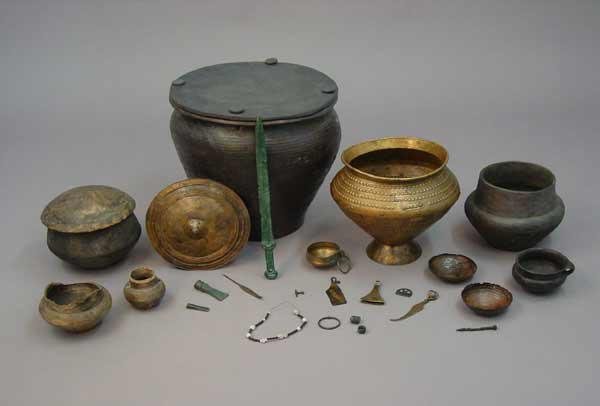
This find made a real sensation in Germany at one time. Still, the case in all senses is unique — both the burial itself, and even more so that the memory of it was preserved in detail for almost 3000 years! But the tradition was extremely stable. The German peasants were far from the first to know the story of the king buried in three precious coffins. This is how the Gothic historian Jordan described in the 6th century AD death of Attila — the legendary leader of the Huns:
“After he was mourned by such moaning, they celebrate” Strava “on his mound (as they themselves call it), accompanying it with a huge feast. Combining the opposite [feelings], they express the funeral grief mixed with glee. Secretly, the corpse is buried at night by night, firmly imprisoned in [three] coffins — the first of gold, the second of silver, the third of strong iron. ([Jordan, Getika)
And again, three coffins: iron, silver, gold, and again this is about the Huns, the truth is about Attila, and the Slavic terminology of the funeral feast is used here.
Volota (velets) — East Slavic mythological characters known from folklore and from some medieval manuscripts, in ancient Russian texts volota — giant and beautiful ancestors of people who grew from seeded Serpentine teeth. In folklore traditions, volots are heroic giants, tearing trees and moving mountains. According to legend, they turned into stones or left alive in the ground. Their graves are mounds called “volotovki”, “volotki”. In many legends, volots belong to the other world. Researchers point to the similarity of the images of Volot and the pagan deity Volos. But there is also the word Giant, which consists of two roots, “Veli-Kan”, as you can see, Veli-from Volot, as -gan is quite consonant with the Huns of Pomerania, especially since the name The mound is also formed from the “Burial of Ghana” (Chickens — possession, chicken, Cossack, translation of the word possession, and hence the city name is the name of the city of Kursk). In terms of meaning, this concept is completely identical to German Pomerania, as the burial place of giants-huns. The finds of the temporal rings of the Volyn type in Gnezdovo and on the Volga are also interesting already in historical time, dating back to the 10th century. As described above, these temporal rings are characteristic of the Caucasus Huns of the 6th century AD and are found in Yamal., And the temporal rings of the Slavs are one of the most accurate indicators of the classification of tribal affiliations of Slavic tribes, and similar rings were found in 2008. on the island of Bornholm M.Naum.
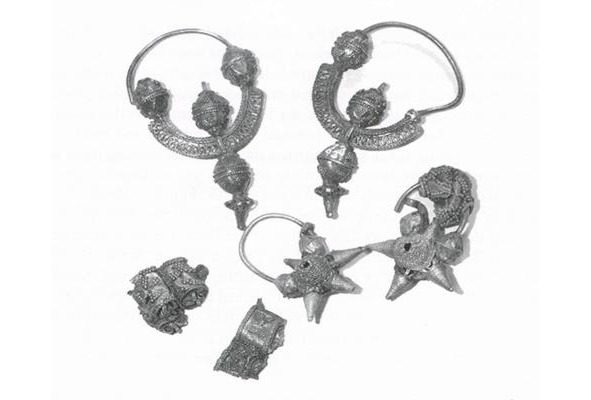
GIANTS AND GANS OF GREECE
There were memories of giants in Hellas, but there they were called Giants (dr. Greek Γίγαντες; singular Γίγας) — in ancient Greek mythology, giants. That is the creation of the Earth. There are myths about the struggle of giants with the gods of Olympus, gigantomakhiya (Greek. Γῐγαντομᾰχία, literally. “Battle with giants”). Describe giants as huge monsters with a human body to the waist, with dragon tails instead of legs (born from Gaia and Tartarus
They had shaggy thick hair and long beards. The lower limbs passed into the dragon-covered bodies of dragons. By tradition, every giant was armed with a spear. The battle took place on the Flegreysky fields (Phlegraei Campi, τά Φλεγραία πεδία, ή Φλέγρα, property “scorched earth”), which are usually placed in volcanic countries (in the Far West, in the Campaign of Arcadia, Thessaly and others. Giants were born, according to legend, according to legend also on Flegreysky fields or on Pallen. Only the latest authors report on the struggle of giants with Zeus and other Olympians, gigantomakhii (other Greek. γῐγαντομᾰχία, letters. So, according to a mythical legend, Gaia, angry by the conclusion of the titans in Tartarus, gave birth to an ogro many monsters with a human body to the waist, with dragon tails instead of legs (born from Gaia and Tartarus). They had shaggy thick hair and long beards. The lower extremities turned into dragon-covered bodies of dragons. By tradition, every giant was armed with a spear (Polybot exception Poseidon’s enemy fought with a trident, like the god of the seas himself.) There were 150 giants in total, but among them there were only 12 of the most important and powerful ones that were supposed to defeat the twelve gods of Olympus: one giant for one Olympian god. Thus, the oldest giant named Alkioney was born with the goal of overthrowing Hades himself, Enkelad was the enemy of Athena, Polybot was born to destroy Poseidon, Mimant was the doom of Hephaestus, and Porfirion was the rival of Zeus. But these giants, according to the prophecy of the goddesses of fate and Hera (wife of Zeus) were vulnerable: they can be killed by a god, but only with the help of the forces of a demigod. Therefore, the gods called the ancient heroes to help in the new war. From the Phlegrean fields, which are usually located in volcanic countries (in the Far West, in Campania, Arcadia of Thessaly, etc.), they began to hit the rocks with burning fragments and burning tree trunks. Born on Flegreysky fields or on Pallen. According to the Arcadians, the battle took place at the town of Baphos in Arcadia.
A terrible battle broke out in which the gods, thanks to the help of the Cyclops, the hundred-armed giants and Heracles, won and killed the giants: some of them were buried under volcanic islands (e.g. Enkelad — under Sicily, Polybot — under Kos.According to Lucan, Athena showed them the head of the Gorgon, and they became mountains.
The word Γίγαντες consists of two words of Gei (dr.) Γῆ, Γᾶ, Γαῖα — “Earth” and γαντες. The name of the giants of Hellas is also similar to the Pomeranian huns, and the Slavic gans (Kans, Velikans) and are associated with the serpent cult, like the Huns of Eurasia.
And this is what Homer writes about a leader named Guney. (Gunei (dr. Greek. Γουνεύς)) a character in ancient Greek mythology. He is the son of Okit and Avrophyta, from Kif, from north-western Thessaly, he brought the Enian under Troy on 22 ships, Gunei was called the leader of the Enian and Perreb, and upon his return he fell into a storm near Mount Kafereya. Leaving the ships, he arrived in Libya and settled on the banks of the Kinipa River. Here, under the name Enian Homer, he gives the oldest mention of the Wends (enedis, which Quintus Rufus refers to as genetics as well. I must say that the word WANAX, the king, the Greeks pronounced ANAX).
But from Kifa Gunei with twenty and two ships
Sailing, leading the Enians and warlike, strong perb,
The tribe of husbands who settled near Dodona cold,
The land of the plowers, by which the cheerful Titaresius makes noise,
Swiftly in Penny the sweeping lushly rolling waters,
Which doesn’t merge with Peneus silverfish anywhere,
Homer. Iliad II 748.
That is, Homer indicates where the Huns-Gantts lived at a time close to him-in Thessaly, where it was possible to engage in horse breeding, and here eneti-venets are mentioned. And next to the Huns, which will be important in other parts of the book. The leader of the Huns of Asia Minor was obviously Gannimed, the hero of the Hellenic epic. According to myths, he was a Trojan prince, and for beauty was taken alive to heaven by Zeus himself. And here, it should be remembered that judging by the findings in Troy lobed temporal rings, jade axes, incredibly similar to stone with the axes of the Borodino treasure, attributable to the Seyminsky –Turbino culture, Troy of the same time obviously also belonged to this culture. And the name Gannimed — “Leader of the Gans” here does not look like an accident, but shows that the Hellenes remembered the name of the tribe that came from Asia.
Giants of Russia
And judging by the numerous finds, the serpentine (dragon) cult and with the Sarmatians (their banners, judging by Bannikov, were in the form of developing dragons), and with the inhabitants of Yamal. You can also recall similar mythological creatures, described similarly, and who also lived in the North, and these are the Gundyrs of the Komi people. Gundyr is the image of the many-headed giant in the Komi mythology. In folklore, Komi-Zyryan and Komi-Permyaks Gundyr had a human image, but under the influence of Russian folklore he turned into a giant snake or dragon. The ceremonial dishes of the Pozdnyakovskaya culture, from the island of Rugen, and the Andronovo culture, which are identical in form and attribute, are also interesting.
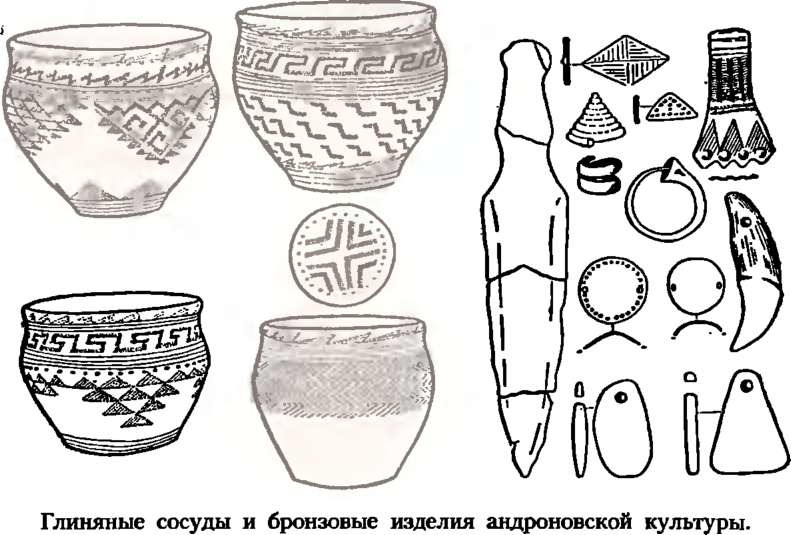
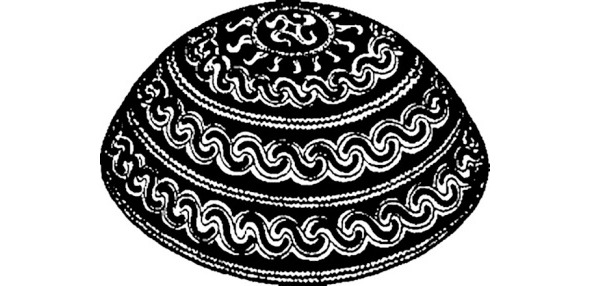
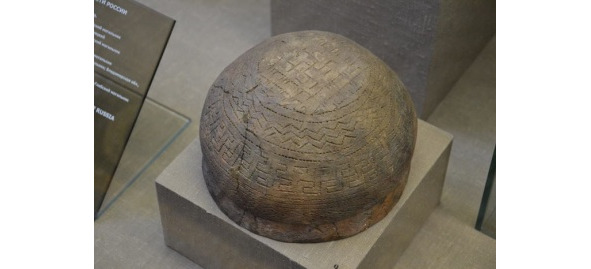
From left to right: vessels with an attributed pattern in the form of a meander and a swastika. Andronovo culture, 12th-century Rugen island, Pozdnyakovskaya culture, GIM.
The vessels of bronze with the eyes of the Sarmatians and the inhabitants of the Yamal Peninsula are identical.
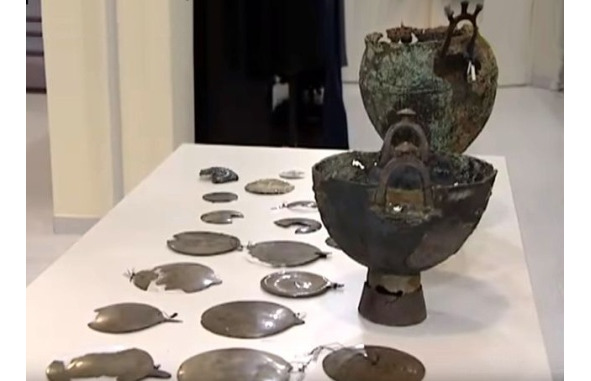
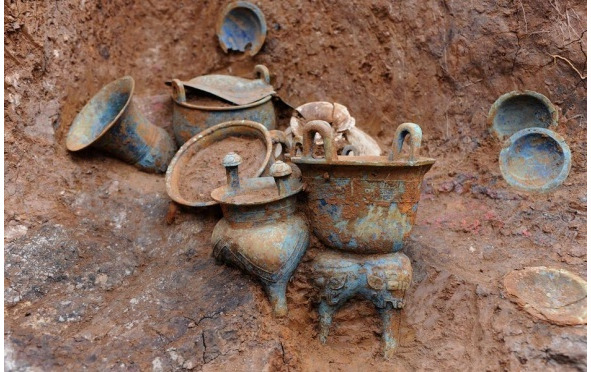
Bronze vessels with eyes, from left to right: Yamal, 1—2c. Kuban, Sarmatian culture 1—2 centuries AD
It is no coincidence in this series of myths and Indians. About the army of Shiva, who was called the Gans, Ganapati (Ganesha) was considered the leader of this sacred army. God’s warrior Skanda, he is also known as Kartikkeya, is considered to be his double, and according to legend, the Indo-Aryans came from the North, and this is evident from the similarities between the descriptions of Apollon Illos (Ullis) and Krishna, and judging by the toponymy of the region, from the region between modern Vologda and the Yamal Peninsula.
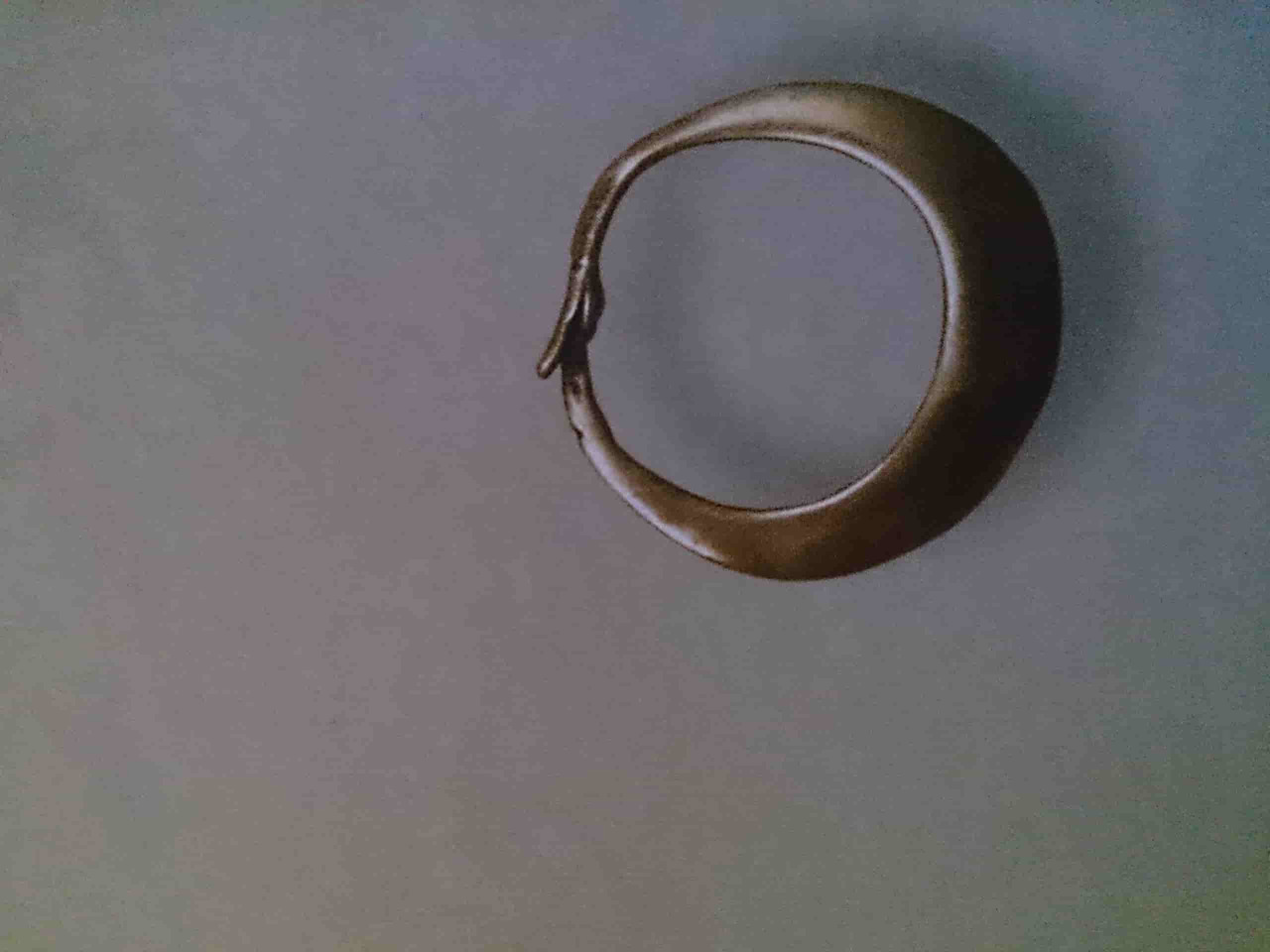
GIM, Moscow.
On Yamal, the first finds of the remains of people of a European type were recorded in 1935. The oldest find is dated 1—2 century AD (treasure of various valuable things). Mummies of people, Caucasoids were found (these are mummies, preserved in permafrost, they still preserved red hair from human remains) buried in birch bark coffins with household items, and many richest finds were found, the most famous of which is a silver dish with the image of the ascension Alexander the Great. The legends of the giants living on the northern islands are also transmitted by Adam of Bremen in the Slavonic Chronicles. According to him, the friezes reached the island in the Far North, hidden by fog and fenced off on all sides by mountains, and the island is inhabited by giants living in caves, and in there were many treasures, some of which the Friesians managed to steal.
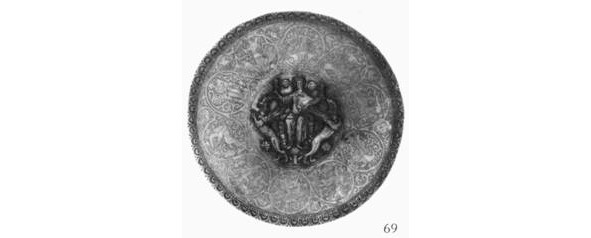
As can be seen from the foregoing, the Ghana-Huns-Huns are identical, and judging by the legends of different Indo-European and Finnish peoples, they are servants of the gods (Attila the God of God), one of the cult attributes is the worship of a snake (dragon), they are characterized by the burial of the mound type (and cremation and inhumation), women wore temporal rings of the Volyn type, as well as snake-shaped jewelry. And the historical Huns, at least part of them, were not of Mongolian origin at all, and came from the territory of the Russian North, and more than once. Their habitat was highly revered by the surrounding peoples, so there are many finds of Iranian and Byzantine origin, confirming this.
The place of the exodus of the Indo-Europeans and the emergence of ancient cults
The location of the ancestral home of the Indo-Europeans has always been a stumbling block for the scientific community and I would like to give a number of arguments for the primary habitat in the Ob-Yamal, Pechora, Arkhangelsk and Vologda regions and the islands of Novaya Zemlya. What makes it possible to come up with such an unconditional opinion? This geographical reference to this area is due to myths and tales of Ganesha, Skanda, Indrik-beast. No one can argue that this is the closest place to the European part of the continent where the remains of mammoths are massively found, and one of the most famous is Yamal, and the most famous find is the Yamal mammoth Masha (Tikhonov A.N., Khrabry V.M. Mammoth from Yamal, journal Nature. 1989. No. 6 P. 47)
So. What kind of beast is Indrik, and what evidence of him remains? In the Russian apocrypha, especially in numerous versions of the “Spiritual Verse on the Pigeon Book”, the name of this beast is in various forms: Indrok, Indra, Kondryk, Beloyandrik, Vyndrik, Unicorn, Unicorn and Unicorn. Name options can be summarized in two:
Indrik and Unicorn (the name White is also important):
Beast mother to all beasts…
And he was digging with his horn mother cheese to the earth,
Dug the keys all deep,
He took out all the boiling water.
This beast lives over the ocean-sea,
And he walks here through the dungeon…
Passes all the mountains of white stone,
Cleans streams and grooves,
Skips rivers, cold fountains…
The Pigeon Book
In different lists of the verse about the Pigeon Book there are various features in the image of Indrik, but in all he is called “father to all beasts.” He walks the dungeon, “skips rivers and lodges, or lives on Tabor Mountain (that is, Mountain of Light,” “when he turns around, all the animals worship him.” Or he lives on the Holy Mountain, eats and drinks from the Blue Sea He doesn’t hurt anyone. Or he walks through the dungeon like a “sun through the skies.” The “Pigeon Book” is a collection of East Slavic folk spiritual poems from the late 15th and early 16th centuries, the questions and answers of which provide information about the origin of the world. The book united both Christian and pagan motives. the tragedy of the schism in Orthodoxy, and was preserved among the Old Believers. According to Russian folklore, Indrik is endowed with the features of the owner of the water elements, springs and founts, and acts as an adversary of the snake. Indrik, as the owner of the water element, is close to the mythical bird Syrin — the symbol of water and fertility. Images of Indrik are often combined with a “wicker”, which in ancient times means water. Often, in the works of folklore, the “homeland” of Indrik the beast is called — full of wonders of the Indus-land — India, which is not accidental, but Indium was somewhat in the history of Indo-European migration, and one was later described by Herodotus in the Caucasus as Sindika, an area in the Kuban region.
“And somewhere it would be audible for a fool to live,
Yes stupid to live, unreasonable?
And where, you hear, there is an Indian Earth,
Is the land of turkey all rich?
Like a lot of gold-silver there,
Yes, for more of that good pearl.
In the Indian land, the steppes are wild,
The steppe is wild, the forests are dark.
Yes, Indric the beast lives in those forests:
It’s all pearly,
And the tail mane is gold-plated,
And his hooves are all damask
From his nostrils fire burns,
Smoke emanates from his ears.
He runs to drink in the Tarja River,
He runs, runs — the whole earth trembles.”
Here, one can see that Tarja River is mentioned as the place of the ancestral home of the Indo-Europeans, which remained with the Hellenes in the form of Tartarus, as one of the places of the country of their ancestors.. Researchers have established the indisputable connection of Indrik the beast with the Vedic and Hindu deity Indra, and his weapon — a vajra, and a wahana (bearer) is the elephant of Ayravat, which also brings him closer to Ganesha, and on whose behalf the name of the country — India, and the sacred river — Indus, and the people — Indians, and religion — Hinduism are formed. And in the Russian North, many names of rivers with the most ancient common Indo-European root “indus” are still preserved. For example, the Indiga river, these are the river basins between the Pechora and Mezen rivers, the river flows into the Barents Sea, and one of the Indigi tributaries is the VREYA river (and it is known that Iriy-Vyriy is the name of the Kingdom of Heaven in Slavic myths). from Yamal, west of the Ob, in the same administrative district. The presence of places with the sacred name “Ida” in the Russian North is also interconnected. Ida is a village in the Babushkinsky district of the Vologda Oblast of Russia, Ida, the sacred mountain on the island of Crete, Ida, the sacred mountain of Troy, Ida, a river in Siberia, a tributary of the Angara. Ida, a river in Russia, flows in the Vologda and Kostroma region, Ida, a river in Slovakia. And of course, one cannot forget the legend of Idawell Field. Idavall or Idavallen (dr.-Scandinavian. Iðavöllr; Swedish. Idavallen; English. Idavoll) — in Scandinavian mythology — the plain on which the aces lived and had fun.
Scientists suggest that in the era of the ancient Indo-European ethnocultural community, Indra was the single supreme god of the Indo-Europeans. After the collapse of the Indo-European conglomerate of tribes and the departure of the Aryans from the North to the Hindustan peninsula, the memory of the Pre-Slavs, and subsequently of Russians, preserved one of Indra’s many hypostases — “Tsar of animals”, “to all beasts of the mother”. “A brief description of the people of Ostyatsky,” Novitsky says: “Some people who want to confirm the story for authenticity describe it in this way: it’s three arshins long, almost arshins long, its legs are like a bear’s, its horns are folded crosswise, and when digging caves, then it bends and stretches like a crawling snake. Some, contrary to this, argue that these bones belong to unicorns or some other marine animals, during the Noah’s flood they were applied and dried up on the ground with water, but they left the land in antiquity. “And the beast Indrik appeared. And the beast Indrik became the father of all the beasts, the beast of all the beasts. The beast Indrik himself is blue, and his eyes are golden. And maybe the beast Indrik turns into a mighty blue warrior. His eyes are golden, he shines with the blue radiance of inner light, he holds a stone club in his hands, and he is dressed in stone armor. And he is so huge, above the mountains he is underground. The beast Rides the Indrik giant the underground warrior through the underworld in a stone chariot.The wheels of the chariot are huge stone millstones, and monstrous black stone dogs, giant dogs, are harnessed to that chariot. And the eyes of those dogs burn like the lights of a thousand bonfires. And those dogs roar like a thousand thunders. And those dogs breathe fire and smoke. The beast Rides Indrik the giant underground warrior in the underworld in his chariot. And he fights with lizards and dragons underground. But the Underground Lizard creeps away from it into its hell. And he closes his hell on the copper door. “Throughout the Russian North and even further — in Manchuria and China — legends about a strange creature of unprecedented growth named indrik-beast are widespread. He is supposedly the size of an elephant and endowed with horns that perform the function of an earth-moving device. Descriptions of the giant mole named tin-shu or yin-shu (“the mouse that hides”) we find in ancient Chinese books. Despite the hyperbolic dimensions of the incredible beast, it should be recognized that folk art is by no means a baseless fantasy. Life and real observations gave storytellers for this legend quite reliable material.
As said, this creature lives in the earth. It digs passages and tunnels with its horn and thereby opens the keys, cleans the springs and fills the lakes and rivers with water. And if the indrik-beast rises under the ground, “the whole Universe will shake.” True, this is not a predatory beast, but a completely peaceful giant: “it does not offend anyone”, apparently eats plants or whatever it finds underground. Well, it is quite possible that in this case we are talking about real mammoths, whose tusks and frozen carcasses are often found in Siberia. Apparently, the legendary mole-giant tin-shu, and fan-shu, and indrik-beast, and the Finnish mamut are one and the same creature. The modern Russian name “mammoth” just comes from the old Russian word “mamut”. The Russians borrowed it from the Finnish tribes inhabiting European Russia. In many Finnish dialects, “ma” means “earth,” and “mut” means Finnish “mole,” meaning Mamut is an earth mole.
“The mountain gave birth to a mouse” is a saying in ancient Greece and Rome. What does it mean? Apollon –Sminfei, Sminfey (Σμινθεύς), in Greek myth-making, the epithet of the god Apollo in the north-west of Asia Minor in Troas. The very name Cminfey is derived from the word αμίνθος, which meant a Cretan mouse. In this regard, the mouse was an attribute of the prophetic god Apollo, hence the name of it ζωον μαντικώτερον (prophetic animal). One of the months (Σμίνθειον) was named by the name of Sminfey; in addition, ancient Greek authors mention the Rhodes festival of Sminfey. Pisarevsky writes that “The mouse in the cult of Apollo with Asclepius corresponds to the mole in the cult of Rudra with Ganesha” [Pisarevsky c / 5] (The legend that the elephant fears only the mouse).And if you examine further, then Ganesha and Indrik are also identical, the message about one Ganesh horn is interesting.. So, one tusk from Ganesha is Indrik (probably Apollon-Sminfey) and what is this tusk horn? Look at the curved swords of the Hittites daggers, Danish swords from Rorbi, the Sejm culture. And the image of the Hittite deities is shown with a curved sword, and the Danish sword is generally not a weapon, it is a ritual object, and most of all resembles an elephant’s tusk.
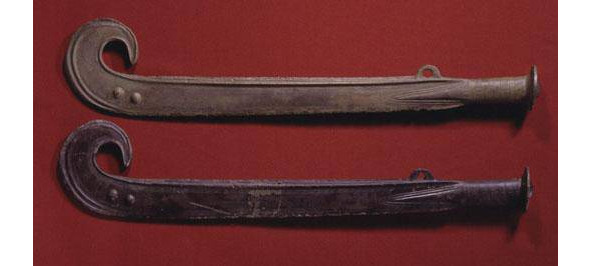
While irrigating a plot of land in Rorby, western Zealand in 1952, Torvald Nielsen discovered a curved bronze sword covered in ancient images. The sword was dated to the beginning of the Bronze Age, (around 1600 BC), and was at that time the first such sword found in Denmark. Thorvald Jensen, five years later, in the same place, while working in the garden, accidentally dug another curved sword. The found sword, like the first one, was covered with a pattern, and there was an image of an ancient ship with two pins. This is the oldest ship image in Scandinavia. These are also the most ancient metal swords found in modern Scandinavia. But these artifacts cannot be called weapons; they have never been imprisoned. The Hittites, a people in Asia Minor, had the same type of sword. Judging by the images on the bas-reliefs, similar swords were worn for ritual purposes by both the Hittite rulers and deities, according to the book of O. Henry “The Hittites” p. 201.
Among the monuments of the Sejm-Turbino culture, among the exhibits of the State Historical Museum of Moscow, there is a curved dagger, which, obviously, was used for ritual purposes.
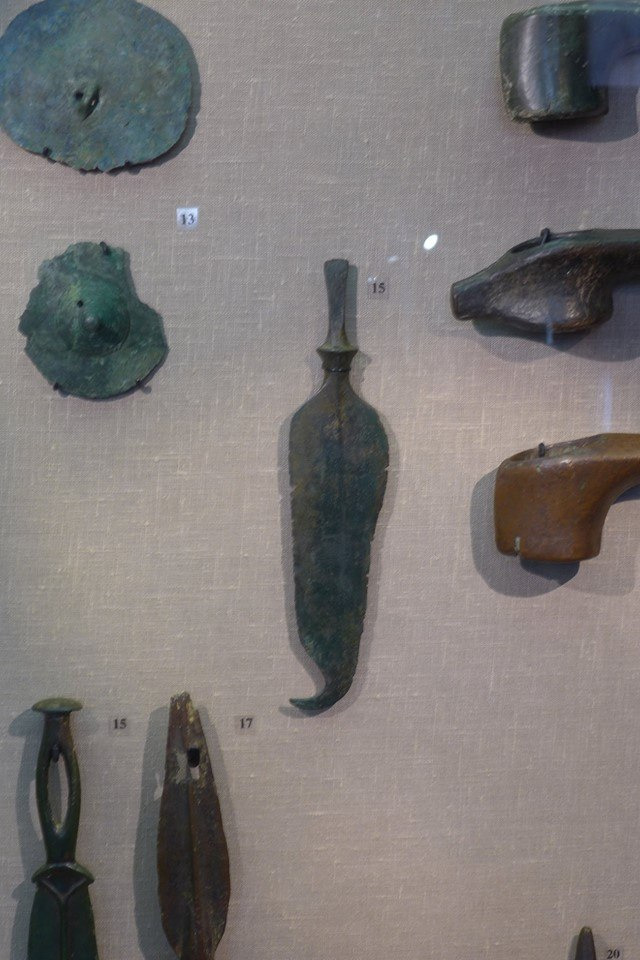
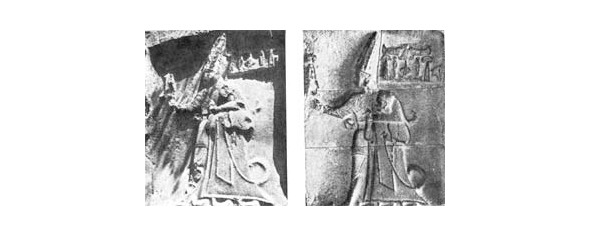
Of considerable interest is the sanctuary of the Kaninsky cave in the Trinity-Pechersky district of the Komi Republic. A feature of this place is the presence of traces of the activity of two cultural horizons: Seima-Turbino and medieval. In addition, single tools of the early Iron Age were found in the cave. In the cave, 41 damaged objects made of metal of the Seima-Turbino type were found. That is, the sanctuary has been used continuously for thousands of years.
Probably all of these ritual curved swords and daggers served as an attribute of worship of the gods, and not for military purposes. And the similarity between them is obvious, it is likely that these objects copied in some sense the Horn of Ganesha (Indrika), because the deity had only one horn, according to myths. And in Russian, the origin of the weapon from the Horn (the word Horn) remained, and in Latin from the word hand-armor (that is, the Romans thought the weapon was a continuation of the hand). It turns out that the horn of Indrik (Ganesha) was presented as a sacred object, a sacred weapon (probably, as in the sense of the Sungir burial, a weapon from a mammoth tusk was considered magic), and this probably explains the use of ivory for the hilt of weapons in later times. That is, the migration of Indo-Aryans from the coast of the Arctic Ocean is proved by the toponymy of places, the location of mammoth burial grounds in that region, and the emergence of myths about Ganesha, Apollon and Indrik-Zvere, in the areas of the Ob river basin, and the present Arkhangelsk, Vologda regions and the Komi Republic, and Khanty-Mansiysk Okrug, where even now there are cases of finds of the remains of mammoths. Also, numerous finds of the most valuable artifacts in the Yamal region and the mouth of the Ob river, as well as in the region of the river. Later Kama, the so-called “Zakamsky silver”, which was most likely the offerings from Iran, Byzantium to the sanctuaries of the Far North, described by Herodotus, who considers these places to be connected with the veneration of Apollo, and Herodotus gives evidence of Aristean who visited the High North in fulfillment vows. That is, the tradition, the recollections of the ancestral home, already at a later time turned out to be so strong that offerings to the gods to the ancestral home of the Indo-Europeans were sent from Iran and Greece, to which there is material evidence, these are the treasures of Yamal and Zakamsky treasures.
GANTS INDIA AND GANESHA
Ganesha, or Ganapati (Sansk. Gaṇeśa)) in Hinduism, the god of wisdom and prosperity. This is one of the most famous and revered gods of the Hindu pantheon. Often before his name is added the respectful prefix Sri-. One popular way of worshiping Ganesha is by chanting the Ganesha-sahasranama, the “thousand names of Ganesha”), each of which symbolizes a separate aspect of God, and the Ganapati-sukta un Shiva and Parvati. At the same time, the Puranic myths contradict each other, describing the birth of Ganesha. In some cases, it is said that Ganesha was created by Shiva, in others — it was created by Parvati, in the third — jointly by Shiva and Parvati. Variants are known in which Ganesha appeared to the world in an incomprehensible way and was discovered by Shiva and Parvati, who adopted him.
Brother Ganesha — Skanda (Kartikeya, Murugan). In the northern part of India, it is generally accepted that the eldest of the brothers is Skanda. In the southern part, the birth championship is attributed to Ganesha. Skanda was revered as an important warlike deity from the 5th century BC. e. according to the VI century AD e. Mass worship of Ganesha began after the sunset of the cult of Skanda. The opinions of myths also differ regarding the marital status of Ganesha. Some myths attribute Ganesha to the brahmacharyas who could not marry. This opinion is widespread in the south of India and, in part, in its northern part. According to another version, Ganesha is associated with such ideas as Buddhi (intellect, mind), Siddhi (success) and Riddhi (prosperity). Sometimes these ideas (concepts) were personified in the deities of the same name, which were recognized by the wives of Ganesha. Another option claims that the wife of Ganesha was the goddess of culture and arts of Saraswati, or the goddess of luck and prosperity Lakshmi. A version circulated in Bengal connects Ganesha with the banana tree of Cala Bo. According to one legend, the father of Ganesha was deprived of his father by the god Shiva. Ganesha did not let his father, inflamed with a passion for his wife, into the chambers where she was. Then Shiva angrily stripped his head, throwing it so far that no one sent could find her. The goddess was angry and refused to admit Shiva to him until he corrected the situation. To reassure his wife, Shiva sewed the head of a nearby elephant to Ganesha. According to another version, on the birthday of Ganesha they forgot to invite the god Shani (personification of the planet Saturn), and he, appearing without an invitation, incinerated the baby’s head with anger. Then the Brahmaposov advised Shiva to sew on the baby the head of the very first being that he met. This creature turned out to be the elephant of Indra — Ayravat. According to oral Indian myths, Saturn (Shani), being one of the relatives, was invited to honor the newborn son of Shiva: the mother of Ganesha, Parvati certainly wanted to show the powerful relative a beautiful baby. With a deadly look that he was unable to control, Shani refused the invitation for a long time, but he was still persuaded. First Shani’s look at the son of Shiva incinerated his head. According to another version, the head just fell off. Regarding the loss of one tusk, there are also several versions of legends. According to one of the legends of Ganesha, fighting the giant Hajamukkha himself broke his tusk and threw it at the enemy. The tusk possessed magical power, and Gajamukha turned into a rat, then becoming the animal of Ganesha. Another legend says that one day Shiva was visited by the sage Parasurama (avatar of Vishnu), but Shiva was sleeping at that time, and Ganesha refused to let him in. Then Parasurama threw his ax into Ganesha and cut off his right tusk. There is also a legend that, recording Mahabharata under the dictation of Vyasa, Ganesha broke his pen and, not wanting to miss a word, broke a tusk and began to write to them.
Ganesha is also the ruler of the Ghana (the army of Shiva’s retinue). There is a legend that Ganesha and Skanda (both are the sons of Shiva) fought for this post, and in the end Shiva decided that he would be the lord of the Ghana, who would run around the Galaxy faster. Skanda immediately took off and began his long journey, and Ganesha walked around his parents in a hurry in a circle, because it was Shiva and Parvati who were the personification of the Galaxy. And after that, Ganesha received the nickname “Ganapati” (the lord of the Ghans). Skanda (Sansk. “Poured out”), Kumara, Karttikeya, leader of the army of the gods, god of war in Hinduism. Depicted as a youth, often with six heads and twelve arms and legs. Other names: Sharavana, Mahasena, Guha, Subrahmanya. Its attributes are a bow, a spear and a banner depicting a rooster. His wahana (mount) is a peacock. It is also believed that Skanda protects not only warriors, but also thieves.
The origin of the name is due to one of the myths about his birth. According to this myth, the god Agni desired to unite with the wives of the seven sages, and the Matchmaker, burning with passion for Agni, took their image in turn (she could not accept the image of one of them, especially devoted to her husband). Each time after joining, she took Agni’s seed, turned into a bird, flew up to a high mountain and poured it into a golden vessel. After some time, the six-headed Skanda was born. According to another legend, Skanda was the son of Shiva and Parvati, born to destroy the demon Taraka, who, according to Brahma, could not be killed by anyone other than the son of Shiva. At conception, the seed of Shiva fell into the fire, but the fire god Agni could not hold him and threw him into the heavenly river Ganges. After that, the Ganges carried the seed to Mount Khimavat, where the born boy was brought up by Krittiki — the personification of the constellation Pleiades. Hence his middle name is Karttikeya. Over time, Skanda led the heavenly army, killed Taraka and many other demons.The cult of Skanda in the form of a special course of the kaumar is widespread in South India, where its image was identified with the Dravidian god of war Murugan.
The emergence and migration of Indo-Aryan tribes
Yamnaya culture
The yamnaya culture (more precisely, the ancient pit of cultural and historical community) is an archaeological culture of the late Bronze Age — the Early Bronze Age (3600—2300 BC). It occupied the territory from the South Urals in the east to the Dniester in the west, from Ciscaucasia in the south to the Middle Volga in the north. The Yamnaya culture was mainly nomadic, with elements of hoe farming near rivers and in some hillforts. Hoes at the same time were made of bones (horns). Ceramic yamnaya culture is becoming more perfect. And blackened dishes appear, although, possibly, they are also milky (the film is formed due to milk)
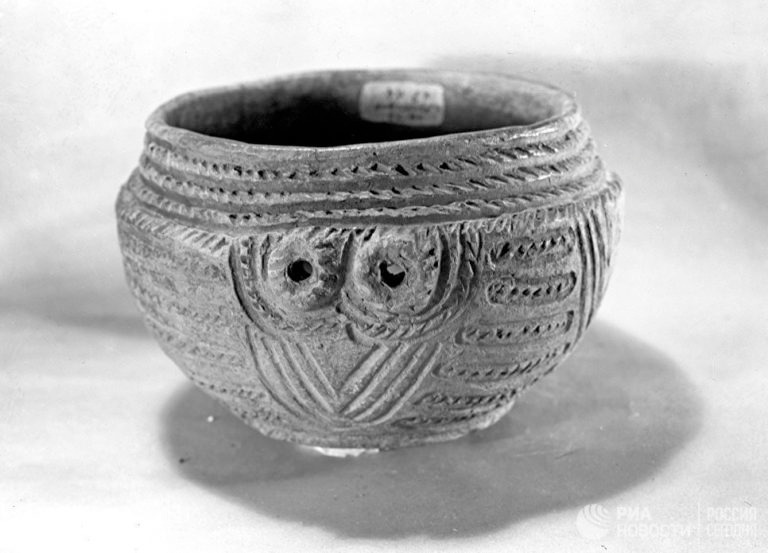
Yamnaya men created wheeled carts (carts). The earliest finds in Eastern Europe of the remains of four-wheeled carts were found in the barbed burials of the pit culture (for example, the “Watchtower” on the Dnieper, the burial ground near the village of Yassky in the Odessa region, the Shumayevsky burial ground in Orenburg, etc.). A characteristic feature of the pit culture is the burial of the dead in pits under the mounds in a supine position with bent knees. The bodies showered with ocher. Burials in the mounds were multiple and often made at different times. Burials of animals (cows, pigs, sheep, goats and horses) were also found. In the steppe strip from the Danube River in the west to the headwaters of the Manych River in the east, there are approximately 160 graves of the pit culture with the remains of wheeled vehicles (wheels, carts), as well as their clay models and the remains of drawings. The oldest of the finds are dated on a calibrated scale to the 32th century BC. e.
Four-wheeled carts were discovered on the banks of the Yalpukh River in the south-west of Moldova, near the village of Mayaki on the left bank of the Lower Dniester, near the village of Sofievka on the Ingulets River, in another burial on Ingule. The remains of a two-wheeled cart come from the pit burial of the Watchtower grave near the Dnieper city. Another wagon was found in the Pervokonstantinovka burial ground near Kakhovka, and the remains of a two-wheeled wagon were found in the village of Akkermen in the Melitopol region. One wheel was found in a pit burial near the city of Rostov, in the burial of a mound 7 of the burial ground Gerasimovka I, Shumaevo II in the Urals. 3 wheels were found in Shumaevo OK II / 2, Abundant I 3/1 — 4 wheel simulations. Both wheels of a two-wheeled wooden arba from the Watchtower grave of the pit culture near the Dnieper city (III millennium BC) were made of a solid piece of wood, cut longitudinally, with round holes for the axle and thick hubs.
In the Samara region, a burial place was found for two people of antiquity 3,800 years old. The bodies are laid next to each other, face to face. As analysis of the genetic material showed, both people died from a plague stick, which had a genetic type similar to Justinian’s plague, and had the ability to live in fleas and thus be transmitted rapidly from person to person. Given that the plague stick from Samara is the oldest example of such a mutation in the plague, scientists have confirmed that massive population migration from the Yamnaya culture reached Europe, resulting in the culture of cord ceramics, and, in Central Asia and Altai, the Afanasyev culture. Analyzes of the remains of other European cultures — Srubnaya, Sintashtinsky, Potapovskaya and Andronovskaya — confirm that the plague stick has genetically linked lines to the one found near the village of Mikhailovsky.These cultures are an example of the reverse migration carried out by the farmers of these crops from Europe, up to Central Asia. The yamnaya culture originates from the Khvalynsk culture in the middle reaches of the Volga and from the Srednestogov culture in the middle reaches of the Dnieper, and it is also genetically called the funnel-shaped cup culture. Yamnaya culture gives way to Poltava. In the west, the pit culture is replaced by a catacomb culture. In the east there are Andronovo and carcass cultures. Kemi-Obinsky culture of Crimea is a derivative of the Yamnaya culture.
And in the Yamnaya culture there is already a rite of neutralization of the dead. Paired pit burial Tamar-Utkul VIII. The upper skeleton is abundantly sprinkled with ocher, the lower one is dissected and placed at the feet. Speaking about the dismemberment of the dead among the Yamnaya tribes, one should also mention something similar to the custom of demembration. The rite of demember, in its basic understanding, means the deliberate displacement of the bones of the human skeleton from its original position and placing them either in disorder or in the order directly opposite to the original position in which the deceased was at the time of burial. Not taking into account the cases when the dissected skeletons play an accompanying role in undisturbed bones, it can be reliably judged that the de-migration noted in the burials of the yamnaya culture of the region is a sign of a certain social stratum of society in the early Bronze Age.
However, the fact that to the east of the Dniester the yamnaya burial places with the use of reingumation is much less common than on the territory of the Prut-Dniester interfluve. This observation, to a certain extent, can serve as evidence that the demembration and the custom of laying the bones of a buried “package” is a narrowly local sign for the pit culture of the Dniester-Danube region.
No traces of the archaeological influence of the yamnaya culture in South Asia, including Tajikistan, were found. Linguistic studies also suggest that the languages of the Indo-Iranian group could come to South Asia not 3000 — 2500 BC, and later — between 2300—1200. BC e. These findings triggered a new search for a source for languages that were distributed during that period. As a result, the study showed that there was no mass migration of steppe nomads to South Asia from the pit culture in the early Bronze Age and the like; however possible. there was a migration from the steppe cultures in the late Bronze Age. Ymnaya were mined for metal in the Kargaly mining and metallurgical center.
Catacomb culture
The Catacomb cultural and historical community is an ethnocultural association of the Middle Bronze Age (XXV — XX centuries BC), spread in the steppe and forest-steppe zone from the Urals and the North Caucasus to the lower Danube. It was originally identified as an archaeological culture in 1901—1903. V.A. Gorodtsov.
Later, researchers identified local options that were identified as independent archaeological cultures. The concept of “catacomb cultural and historical community” was introduced into scientific circulation. It is represented by the monuments of the following catacomb cultures:
— old katakombnoy (XXV — XXIII centuries. BC.),
— Donetsk (XXIII — XX centuries BC),
— Middle Don (XXVIII — XXVII — XX centuries BC),
— inhulian (XXVIII — XX centuries BC).
The pioneer of the catacomb culture is V. A. Gorodtsov, who in the years 1901—1903 in the process of studying the barrow antiquities of the Seversky Donets drew attention to the burials in the catacombs — a specific funeral structure consisting of a vertical well (entrance pit), dromos (passage in the form of a corridor) and burial chamber (burial place). In accordance with the design features of the burial structure, the culture allocated by him was called catacomb. Catacomb graves are known in the same region and much later, both in the Sarmatian time and in the graves of the Salt-Maetsk culture. The very structure of the grave, consisting of a dromos and a burial chamber, often with a dome, has parallels in the famous grave of King Hinze in Germany, and probably with the construction of the famous domed tombs of Hellas. The most southern monuments are known in the steppes of Crimea, and the most northern — near Kursk and Yelets. Catacomb settlements are known on the Don (near Rostov), Kibikinskoye near Lugansk, Ternovskoye near Kamyshin on the Volga, etc. Later, researchers turned their attention to the heterogeneity of the catacomb monuments in different territories, which contributed to the identification of a number in the 50—60s of the XX century. local options. With the accumulation of archaeological material, prerequisites were created for understanding local variants as independent archaeological cultures of a single catacomb cultural and historical community, which was ultimately done in the early 1970s by researchers L.S. Klein and O.G. Shaposhnikova.
The problem of the origin of the catacomb culture (later the catacomb cultural and historical community) was posed at the beginning of the 20th century by V.A. Gorodtsov, almost immediately after the discovery of the burial mounds in the catacombs on the Seversky Donets, but still remains debatable. Researchers discuss autochthonous and migration theories of the origin of tribes of the catacomb community.Adherents of the autochthonous theory believe that the emergence of a catacomb community should be associated with the further development of the local pit population. Proponents of the migration theory suggest that the catacomb tribes genetically go back to the Yamnaya, but arise under the strong migration influence of the populations of the Ciscaucasia. The type of economy of the carriers of the catacomb cultural and historical community was determined by the environmental conditions of the steppe and forest-steppe zones. So, in the steppe pastoral or cattle breeding of the nomadic type, which was based on the breeding of cattle and small cattle, took root. In the forest-steppe, a model of shepherd or stall cattle breeding is prevailing with the predominance of cattle and pigs in the herd. For the catacomb cultural and historical community, tribal villages and low (up to 1 m) burial mounds without cremation are characteristic. Catacomb funeral device, ritual ceramic incense burners, ornament in the form of a cord stamp, flat-bottomed goblets, crouched corpse on one side. In the burials there are wooden carts. Ceramic implements carry elements of the culture of spherical amphoras and cord ceramics in Central and Eastern Europe.
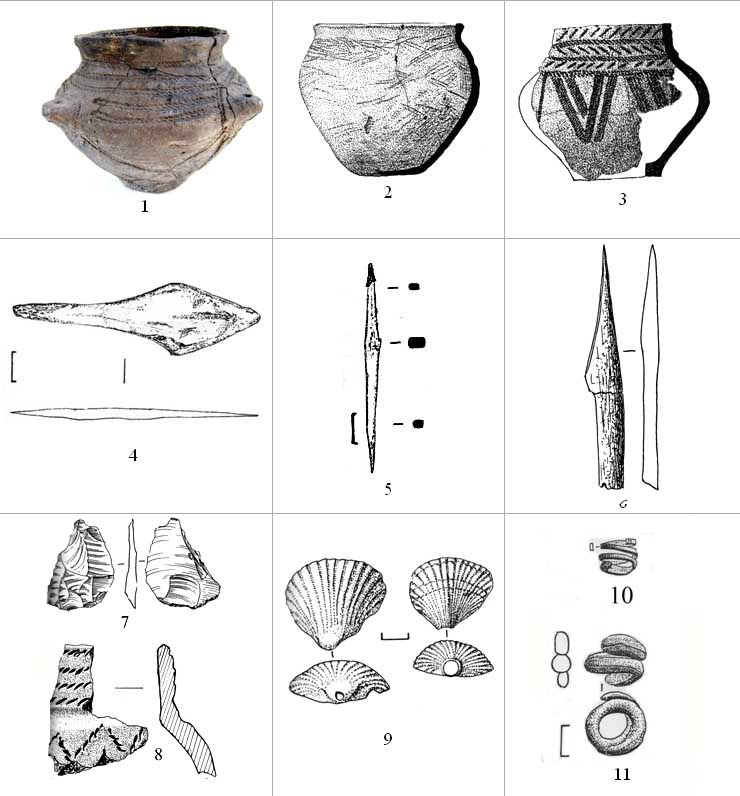
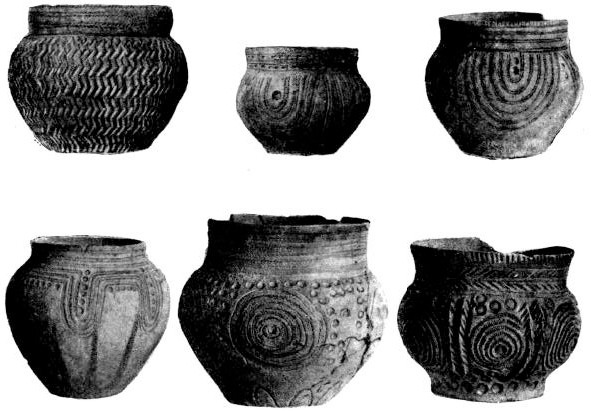
The ceramics are also blackened, with a relief pattern, often spiral-shaped, which brings them closer to the Trypillian ones, but people of the catacomb culture didn’t apply the dishes, but squeezed it out. This brings the ceramics of the catacomb culture closer to the same Middle Hellenic one.
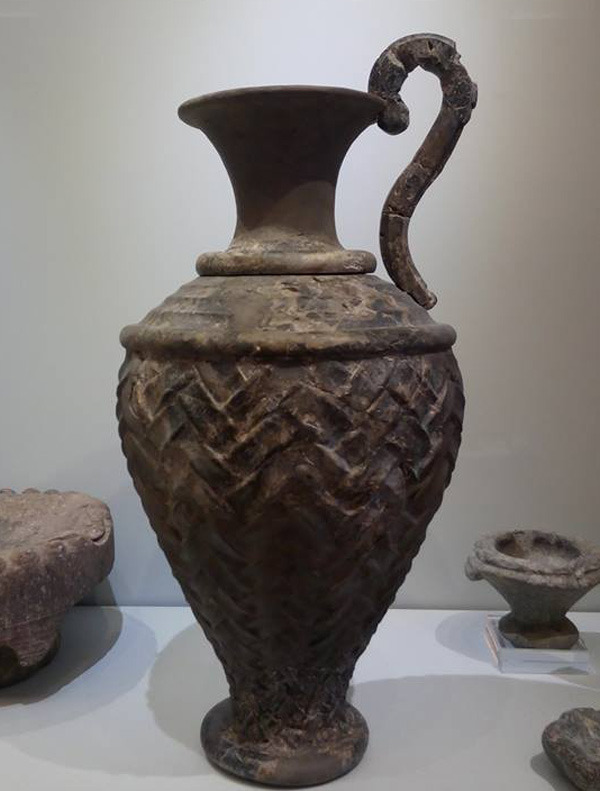
Catacomb pottery differs from the primitive and uniform in the form of dishes of ancient yamnaya culture. Known flat-bottomed pots with convex sides and a narrowed neck, the surface of which is decorated with ornaments printed with prints of twisted rope, comb teeth or just a sharp object. The motifs of the ornament are triangles, zigzags, but circles and spirals are more common, reflecting the cosmic representations of ancient farmers about the solar deity and mysterious plant principles that turn grains into stems, which in turn give rise to many of the same grains.
In the territory of Donbass there was a metallurgical center. This is also confirmed by the finds in Donetsk catacomb burials of stone beater, which were used to crush ore before washing and smelting. In the inventory of the catacomb culture, objects from bronze are presented: leaf-shaped knives, axes with eyes, awls and bronze jewelry, but most of the implements were still made of stone and bone. In the Dmitrov mound No. 6 in the Zaporizhzhya region, at the entrance to the burial chamber, a wooden catacombs cart was found with a fully preserved wheel 5 thousand years old. A two-wheeled wagon with a preserved wheel 0.6 m in diameter is known from the Tyagunova Mogila catacomb burial in the Zaporizhzhya village of Maryevka. In the burial complex of Ulan IV of the West Manych catacomb culture in the Rostov Region, a four-wheeled wagon made in the XXIII century BC was discovered. e.
Skulls of the catacomb stage are distinguished by brachycrania and a higher arch than in the pit culture. Male skulls are characterized by a high mesocrane skull, highly profiled broad face, wide cheekbones, high transference, very large protrusion of the nasal bones. In the Dnieper steppe there are three craniological options:
— brachycranic — does not find analogues of the Bronze Age.
— mesocrane — reveals a distant resemblance to the skulls of the Afanasyev culture of Altai.
— dolichocranial — similar to the culture groups of Noua and Srubnaya.
If we talk about the catacomb culture, apparently, the rite of neutralization of the dead, the dismemberment of dead bodies to neutralize their harm to the living, was not only inherited from the pits, but also received further development. So, among the catacomb tribes, the custom of decapitation (separation of the head), which can be considered on the example of the Middle Don catacomic culture, has spread.
Findings of burials with separated skulls are recorded throughout the distribution area of the Middle Don catacomb culture from the Seversky Donets to the Don-Volga interfluve (Khoper River).On the territory of the Middle Don, among more than 400 burials of the Middle Don catacomb culture, five burials with skeletons are known, in which the separation of the skull of the buried is reliably recorded.
All considered burials were accompanied by ocher, which was located both in separate burial places and completely covered the skeleton of the buried. In each burial, ocher, as it were, emphasizes the special ritual significance of the objects it accompanies. This type of “special burials” is characterized by a variety of accompanying equipment. The set of equipment in each burial is individual, but a common feature for all burials is its originality. Almost all decapitated burials were accompanied by animal bones. In addition, two fortunetelling bones are a particularly interesting find. According to some researchers, the “dice”, but rather the fortunetellers, that is, the buried was a representative of the priestly group. “Bones with signs” or dice, namely fortunetelling bones, originally had cult character, were the prerogative of a certain class associated with the performance of priestly functions. Among the cult objects is the flute, as well as the bone hairpin (Vlasovka 12/3). The dead already have artificial deformation of the skulls. According to A.T. Sinyuka, all burials where a burial ritual of burial was used, indicate the high social status of the deceased. Only prominent representatives of society and their immediate circle could claim burial places under the mound. But even from this series of burials, according to special signs, decapitated burials stand out. Researchers believe that it is possible to assert with sufficient confidence that decapitated burials are not specifics of a particular culture of the catacomb community, but most likely have a supercultural character, reflecting the complex social structure of tribes carrying catacomb traditions. Found the burial of a teenage girl. Stuffed with boulders. Weighing hundreds of kilograms, which speaks of considerable fear inspired by such a young creature. But faith in the “evil” deceased seems obvious and proven.
Srubnaya culture
The cultural-historical community is an ethnocultural association of the late Bronze Age (XVIII — XII centuries BC, according to other estimates — XVI — XII centuries BC. Some scholars, like S. Berestnev I. that the timber culture existed before IX BC, common in the steppe and forest-steppe bands of Eastern Europe between the Dnieper and the Urals, with individual monuments in Western Siberia and the North Caucasus, was originally identified as a culture in 1901—1903 by Russian archaeologist V. A. Gorodtsov, but in the 1970s N. Ya. Merpert and E.N. Chernykh drew attention to local differences within culture and introduced into scientific use the concept of “carcass cultural-historical community.” It is represented by the monuments of Pokrovskaya (XVIII — XV centuries BC) and Berezhnovsky-Mayevskaya (XVII — XII centuries BC) timber cultures, which are settlements, necropolises, workshops, mines, treasures and single finds. Dwellings — dugouts, half dugouts and land. Necropolises are represented by barrows and soil burial grounds. In the kurgan stratigraphy, the carcass burial sites occupy an upper position in relation to the graves of the pit and catacomb communities. The ceremony included the burial of the deceased in pits or wooden log cabins in a bent position, on the left side, of the hands in front of the face. Cases of cremation are also known. Funeral equipment is represented by jagged and canned vessels, less commonly metal products.Changes in climatic conditions, depletion of natural resources and overpopulation led to a sharp reduction in the population and cultural transformation of the tribes of the Srubnaya community. The pioneer of the carcass culture is V. A. Gorodtsov, who in the years 1901—1903, in the process of studying the barrow antiquities of the Seversky Donets, turned his attention to curved burials in wooden frames — log houses. In accordance with the design features of the burial structure, the culture he allocated was called the carcass. The concept of the origin of culture from the Poltavkin monuments of the Volga region and its migration at a late stage was developed in the mid-1950s by O. A. Krivtsova-Grakova. In the 1970s, N. Ya. Merpert and E.N. Chernykh turned their attention to local differences within the logging culture, but the identification of individual local variants or cultures, in their opinion, was problematic at that time. Later, in the course of scientific research, a number of researchers turned their attention to the anthropological, chronological and cultural differences of the steppe and forest-steppe monuments, which confirmed the hypothesis of local differences in the environment of the Srubnaya culture. N. Ya. Merpert and E.N. Chernykh put into scientific use the concept of “felling cultural-historical community”, which reflects its cultural heterogeneity. In the mid-1970s, N.K. Kachalova identified the Berezhnovsky type of monuments based on the materials of the Lower Volga, and I.F. materials of the Mayevsky burial ground (Dnepropetrovsk) — Mayevsky type of monument]. In the 1990s, N. M. Malov and O. V. Kuzmina, on the basis of materials from the Pokrovsky burial ground, single out a separate Pokrov culture. The common features of the funeral rite of the Berezhnovsky and Mayev types of monuments allowed V.V. Otroshchenko to combine both types into a separate Berezhnov-Mayev culture as part of the carcass cultural and historical community of the Late Bronze Age. Yu. M. Brovender singled out the Stepanovsky type of monuments in the environment of the Berezhnov-Mayev carcass culture. Thus, among the carcass cultural-historical community of the Late Bronze Age, the Pokrov and Berezhnov-Mayev carcass cultures and the Stepan type of monuments are distinguished, which reflects its cultural heterogeneity and formation features. The problem of the origin of the log house culture (later the log house cultural and historical community) was posed by V.A. Gorodtsov in 1907, almost immediately after the discovery of burial mounds in log cabins on Seversky Donets. The researcher formed the migration concept of origin, which was finalized in the mid-1950s by O. A. Krivtsova-Grakova. The researcher believed that the carcass culture was formed in the Volga region on the basis of the Poltava culture of the Middle Bronze Age. One of the variants of this hypothesis is the concept of the Volga-Ural cultural genesis of V. S. Bochkarev. Migration theory has not received absolute support in the scientific community. N. N. Cherednichenko spoke in favor of the autochthonous origin of the carcass culture. In his opinion, all local variants of the carcass culture are synchronous, and there was no single center of culture origin, and the formation of each variant should be explained based on the specifics of the local archaeological situation. V.V. Otroshchenko developed in the 1990s a concept for the development of a felling cultural and historical community from the Sintashta, Don-Volga Abashev, Babin cultures and Potapov type monuments of the Middle Volga region in the process of their ethnocultural interactions. In accordance with it, the researcher identified among the community of Pokrovsky and Berezhnovo-Mayevskaya log cabling, which, in his opinion, developed on a different basis. Pokrovskaya carcass culture develops in the forest-steppe interfluve of the Don and Volga due to the political and cultural influences of Sintashta culture bearers on the Late Abashev population, from where it spreads to other regions.
Protoberezhnovsky monuments are common in the Lower Volga region, where, according to the researcher, the Novokumak ethnic component that came from the east is superimposed on the Late Catacomb population.Later, the tribes of the Pokrovsky carcass culture advance on the Left Bank of the Seversky Donets, where they are fully assimilated by the carriers of the Babin culture. As a result of the assimilation of the Pokrov population by Babin tribes, the Berezhnovo-Mayev log-house culture is formed. Pokrovskaya carcass culture (XVIII — XV centuries BC) is widespread in the steppe and forest-steppe zone from the Seversky Donets to the Volga. Separate monuments are presented in the Urals. An eponymous monument is the Pokrovsky burial ground in the Saratov Volga region, which was investigated by P.S. Rykov in the 1920s near the city of Pokrovsk (now Engels). Highlighted in the early 1990s by N. M. Malov and O. V. Kuzmina as a cover culture. It was formed on the basis of the Don-Volga Abashev culture with the direct influence of the Sintashta and Potapov type monuments of the Middle Volga. Monuments are represented by settlements, burial grounds, treasures, mines, workshops and occasional finds. The settlements were located in close proximity to the rivers on small elevations. The most studied settlements are Usovo Lake, Mosolovka, Kapitanovo, Yanokhino, Scars and Prokazino.
Dwellings of that time, terrestrial, dugouts and half-dugouts of a frame-pillar construction with a gable or tent-shaped roof. The walls are made of turf, logs, rarely made of stone. In large buildings, the residential part is most often isolated from the auxiliary. Inside the dwellings were one or more foci, pits, sometimes a well. Funeral monuments are represented by barrows and soil burial grounds. They are located mainly on terraces or hills along river banks, less often on watersheds. The burial mounds of the Pokrov culture include a small number of embankments, from 2 to 15. Single mounds and huge necropolises are rare.
A mound embankment was erected after the last burial. The number of burials in the mound varies from 1 to 100. The deceased were buried in sub-rectangular pits, sometimes in log cabins in a crouched position on the left side, in an adoration position, with their heads to the north. Vessels act as funerary equipment, less often — weapons and jewelry. In the graves are also fixed animal bones — the remains of meat food. The most studied burial grounds are Pokrovsky, Staroyabalaklinsky and Novopavlovsky. The ceramic culture complex is represented mainly by pointed pots with geometric patterns. Tools and weapons made of stone are represented by a variety of axes and maces, arrowheads, scrapers, hammers, knives, anvils, ore graters and abrasives. Jewelry is also known — faience beads, grooved temporal pendants and bracelets.Bone products are widespread: psalms, awls, veneers, punctures, needles, knitting needles, arrowheads. Metal tools are represented by axes, sickles, telescopes and chisels, punctures, cuttings with a wide rhombic crosshair and daggers with a pristine handle. Jewelry made of bronze, antimony and gold is also widespread: rings, temporal lobed rings, plaques, spiral-shaped bracelets and open bracelets with a spiral ending. In general, the spiral-shaped ornament was widespread. The basis of the economy of the carriers of the Pokrov culture was stall and distant cattle breeding. The population of the Pokrov log-house culture ethnically represents the Indo-Iranian ethnic group and had certain signs of the Indo-Aryan ethnic group at an early stage of its development.
The Berezhnov-Mayev log-house culture (XVII — XII centuries BC) is widespread in the steppe and forest-steppe zone from Ingulets to the Volga. The eponymous monuments are the Berezhnovsky burial mound in the Volga region and the Mayevsky burial ground near the city of Dnepropetrovsk. In the 70s of the XX century N.K. Kachalova was allocated Berezhnovsky type of monuments, and I.F. Kovaleva — Mayevsky. The general features of the funeral rite allowed V.V. Otroshchenko to combine both types into a separate Berezhnov-Mayev culture as part of the felling cultural-historical community. Yu. M. Brovender singles out the Stepan type of monuments among her. It was formed on the basis of the Babin and Pokrovskaya log cabin crops. Monuments are represented by settlements, mounds and soil burial grounds, mines, workshops, treasures and random finds. The settlements were located in close proximity to the rivers on small elevations. The dwellings are represented by dugouts, half dugouts and ground buildings with stone foundations of walls. For heating homes used foci. Funeral monuments are represented by barrows and soil burial grounds. Mound necropolises are located mainly on terraces or elevations along river banks, less often — on watersheds. A small number of embankments are included, usually with several fillings. The construction of long barrows was practiced. The deceased were buried mainly in sub-rectangular pits, sometimes stone crates, in log cabins in a crouched position on the left side, head to the east. Cremation is also known. Soil cemeteries of the Berezhnovo-Mayev culture are located mainly on the edges of the indigenous coasts, the first floodplain terraces and on small natural elevations in the floodplain — in the immediate vicinity of the rivers and their synchronous settlements. Burials are represented by inhumations and cremations. Burials according to the rite of inhumation took place in sub-rectangular pits and stone boxes. Burials in log cabins on the territory of soil burial grounds were not recorded. The deceased were in a crouched position on their left side, head to the east. Cremations are represented by burials in urn vessels and in small soil pits. Vessels act as funerary equipment, metal products are less common.
Ceramics is represented by cans, pot-like and jagged vessels with geometric patterns in the form of horizontal and inclined lines, flutes, zigzags, Christmas trees and other geometric shapes.Sometimes on vessels, mainly in their upper part, string ornament and various signs in the form of crosses, solar signs, rectangles, schematic anthropomorphic and zoomorphic images are found. Already at a later time, a swastika and meander pattern begins to be depicted. A number of researchers see them as primitive pictographic writing. The content of these signs has not yet been deciphered. In burials there is also wooden cult ware, sometimes with bronze shackles. Tools and weapons made of stone are represented by a variety of axes and maces, scrapers, hammers, knives, anvils, ore graters and abrasives. Bone products are widespread: psalms, awls, veneers, punctures, needles, knitting needles, arrowheads. Metal tools are represented by axes, sickles, telescopes and chisels, punctures, needles, cuttings knives with highlighted crosshairs and daggers with an annular emphasis.
Metal jewelry is also widespread: rings, temporal lobed rings, wire pendants, spiral bracelets, and open bracelets with a double volute. Voluta, appears in the form of hairpins and images. The basis of the economy was stall and cattle breeding, which complemented agriculture. Ethnically, the carriers of the Berezhnovo-Mayev culture represent the Iranian-speaking group of the Indo-European language family. Recently, a scientific discussion has been actively conducted regarding the upper chronological limit of the felling cultural-historical community.. Berestnev S. I. in his work “Felling culture of the Forest-Steppe Left Bank of Ukraine” extends its existence until the 9th — 8th centuries BC, that is, the Cimmerian — Scythian culture replaces the felling culture.
Decontamination of the dead
Gubin A.S. in his article, “Non-ordinary burials of the Burial Culture of the Ural-Volga Region”, writes that according to the excavations in the Ural-Volga region, and by studying the materials of excavations of the burial sites of the log-timber culture, it was possible to establish that 7 out of 30 cases were found with signs of neutralization (23, 3%). The term “neutralization” by Gubin means the deliberate mutilation of a corpse: cutting off the head, limbs, and other parts of the body. A burial with an absent skull was recorded at the Kachkin burial ground (burial mound No. 15 burial No. 1); here, in the burial No. 1 of burial mound No. 20, the skull was present, but was located 50 cm to the north of the shelf [5: 13]. In the solitary burial of the mound No. 37 of the Staro-Yabalaklinsky burial ground there were no arm bones, and in the teenage burial No. 1 of the mound No. 104, the skeleton, feet, and skull were absent from the bone [6: 47]. Gubin notes that the inventory was present in all burials with signs of neutralization.
Culture
The type of economy of the carriers of the log-house cultural-historical community was mainly based on stall and distant cattle breeding, which partially supplemented the agriculture among the population of the Berezhnovo-Mayev log-house culture. In the Dnieper-Donetsk interfluve, isolated grains of cultivated cereals were discovered, which indicates the presence of floodplain agriculture in the economy of the Srubny tribes. In the Ciscaucasia and Caspian steppes and semi-deserts, semi-nomadic pastoralism may have been practiced. Nevertheless, the basis of the economy of the settled log-house population of the Late Bronze Age was stall and distant cattle breeding. Cattle breeding was a priority; horses accounted for a smaller percentage in the herd. Mining and metallurgical production, which was based on the copper sandstones of the Urals (Kargalinskoye deposit) and the Donetsk Ridge (Bakhmutskoye deposit), played an important role in the economy of the demographic cultural and historical community, and ore occurrences of the Middle Volga region were also used. The basic production of metal products was mainly located in several towns of foundry metallurgists — Usovo Lake (Podonechie), Mosolovka (Podonye), Lipovy Gully (Middle Volga), Gorny 1 (Cisurals).
The tools necessary for metalworking are represented by axes, hammers, hammers, ore graters, flat and grooved chisels and chisels, cut-type knives and “daggers”. In the late Srubnaya time, logging blacksmiths master the secret of obtaining critical iron, from which the first few products, mainly small in size and weak in manufacturing quality, are forged. There are jewelry made of gold.
The lack of written sources significantly complicates the solution of the issue of ethnicity of the tribes of the Srubnaya cultural and historical community of the Late Bronze Age. Thus, the main method for determining ethnicity is to establish a relationship between the range of the tribes of the Srubnaya community and the spread of Indo-Iranian hydronyms and toponyms. Their pre-Scythian origin was convincingly proved by the linguist V.I. Abaev. Later, N. L. Chlenova traced the Iranian hydronyms in the steppe and forest-steppe zone from the Dnieper to the Ob, which completely coincided with the distribution area of the Srub and Andronovo cultural and historical communities and proved their belonging to the Iranian-speaking group of the Indo-European language family.
According to V.V. Napolsky, borrowings in the Finno-Ugric languages indicate that native speakers of the steppe cultures of the Bronze Age spoke the language of the Indo-Aryan type.Such attribution, as evidenced by the phonetics of borrowing, has traditionally been rejected for historical reasons. East Iranian speech spread only in the steppe with the culture of roll ceramics at the end of the 2nd millennium BC. e. Carriers of the carcass culture chronologically preceded the Scythians and Cimmerians. For this reason, the carcass culture is often regarded as an archaeological analogue of the first Iranian dialects of the Northern Black Sea region. In other words, culture bearers are predecessors of the Scythians and their kindred peoples. However, there is another point of view: the area of the Srubnaya culture is the bridgehead from which the migration of ancient Iranians to the north-west of modern Iran took place. According to this point of view, semi-nomadic cattle-breeding tribes of the Srubnaya and Andronovo cultural and historical communities represent the Iranian group of the Indo-European language family at an early stage of its development.The early and middle phases of the late Bronze Age era in Eastern Europe coincide with favorable climatic conditions — mostly wet and warm weather. There is a sharp rise in the producing forms of farming. Accordingly, in the XVIII — XIII centuries BC, there was a maximum population density in all regions of the East European steppe and forest-steppe. A log-cultural and historical community is born, which was destined to complete the tradition of the formation of great ethnocultural associations in Eastern Europe in the Bronze Age. The demographic explosion in the environment of the logging community, the peak of which occurs in the forest-steppe in the XVI — XV centuries BC, and in the steppe in the XIV — XIII centuries BC, led to the depletion of natural resources and the collapse of the log-cultural and historical community.
Aridization (desiccation) of the climate at the end of the Bronze Age (11th — 8th centuries BC) led to the degradation and disappearance of the carcass culture.
Changing climatic conditions for dry and cool weather, together with total overpopulation, led to disastrous consequences. The population is sharply reduced, which according to archaeological data is recorded in a decrease in the number of settlements and their cultural transformation. Carriers of the carcass cultural and historical community took a direct part in the formation of the Belozersk and Bondarikha cultures of the final stage of the Bronze Age and had a noticeable effect on the population of the forest strip of Eastern Europe in the person of the Late Pinnacle and ordered cultures.
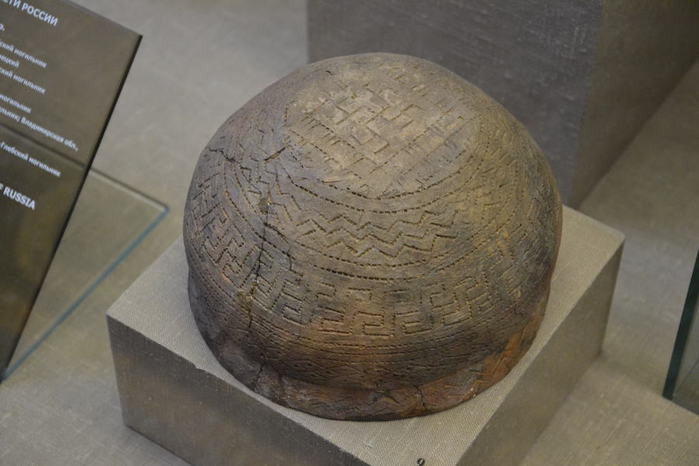
Abashevskaya culture
By the middle of II millennium BC. e. In the forest-steppe zop of Eastern Europe, the Abashevsk cultural and historical community formed mainly of the cattle-breeding population, the monuments of which are now known on the territory from the left bank of the Dnieper in the west (the Desna and Seym basins) to the river. Tobol — in the east, and the chronological limits are determined by the second — third quarter of II millennium BC. e. The study of Abashev antiquities dates back more than 100 years (Pryakhin, 1981). Abashev culture itself was first isolated only after the excavation of prof. V.F.Smolin in 1925 of the Abashevsky burial ground in the territory of Chuvashia (Smolin, 1928; Smoline, 1927). Intensive studies of the Abashev burial grounds on the territory of the Chuvash Republic and the Mari ASSR in the post-war decades (Merpert, 1961; Halikov, Lebedinskaya, Gerasimova, 1966a) gradually outlined the idea of Abashev culture in the Middle Volga region and determined the comprehension of all Abashev antiquities (Yevtyukhov, 1964;. N., 1961; Halikov, 1966).
People of Abashevskaya culture are mainly engaged in cattle-breeding with subordinate importance of agriculture. The herd was dominated by cattle with a significant role of small cattle. The latter is especially characteristic for the early stage of development of this population and for those groups of Abashevists who continued to maintain a certain mobility at a later time. Separate groups in the late Abashev time show a tendency to the development of settled cattle-breeding and farming (the appearance of significant long-term villages, the presence of pig bones in these settlements, an increase in the number of evidence of farming, etc.) — a whole group of the late Abashev villages in the lower reaches of the river is especially indicative. Voronezh. There are horses in the herd of this population. In the more northern regions, on the territory of the modern Mari-Chuvash Volga region, the Abashev population was more mobile and, obviously, was more involved in pastoral cattle breeding. But I must say that in this region, and even now, people have always been engaged mainly in dairy cattle breeding, which did not make them nomads. In modern Finland, agriculture is also predominantly occupied by dairy farming, which does not make them nomads. The level of development of livestock breeding has led to wide opportunities for the use of livestock by Abashevites for transport and military purposes. The latter, in turn, not only contributed to their distribution over significant territories, but also was one of the conditions for the formation of a huge cultural and historical community. Here you need to understand the specifics of cow breeding and their needs, the abundance of water and grass, and in addition, the cow loves to sit in the water in the summer, escaping from gadfly. It was among the Abashevites, especially at the late stage of their development, that disc-shaped psalms with spikes became widespread, the most impressive are two ivory-ornamented psalms from the main burial of the mound 2 of the Old Yuryevsky burial ground in the Upper Don region. The finds of such psalms record the first appearance of chariot transport in the Eurasian steppe and forest-steppe (Pryakhin, 1972, p. 238; 1976 a, p. 124; Cherednichenko, 1976, p. 147 — 148; Smirnov, Kuzmina, 1977, p. 42 — 45,) The very fact of using disk-shaped psalies in the harness of chariots was undeniably confirmed during excavations of the Sintashta burial ground in the Trans-Urals, in the burials of which it was possible to trace the remains of such chariots themselves (Gening, 1977, p. 59, 66).
This population was the first in a sufficiently large volume to begin the development of the Ural copper deposits, especially the Trans-Ural copper deposits Tash-Kazgan and Nikolskoye, using the copper sandstones of the Urals, as well as the Volga region (Salnikov, 1962; Chernykh, 1964; 1970, p. 27 — 28, 108—111, etc.). Abashevsky masters developed their form of tools, weapons, and jewelry. The Abashevites are known for lamellar implements (knives, sickles, brackets) that have different functional purposes, their types of bent-axes: Kamsky, according to B. G. Tikhonov (Tikhonov, 1960, pp. 59–62), narrow-billed, according to E. N. Chernykh (Chernykh, 1970, p. 58, fig. 50), Abashevsky, according to S. A. Korenevsky (Korenevsky, 1973, p. 44–47, fig. 4), flat tesel axes, according to B. G. Tikhonov (Tikhonov, 1960, p. 66), type of elongated tesel axes with an expanded heel, according to E.N. Chernykh (Chernykh, 1970, p. 62), forged tip tips with an open sleeve, several varieties of knives and daggers, etc.. Abashevo masters produced petaloid plaques, rosettes, bracelets, which have not closed, often priostrennye ends, small grooved suspension and so on. D. For abashevtsev characteristic rich decoration of clothes, especially headgear, sewed small semicircular plaques wire pronizkami and other ornaments.
The very scale of development of the Abashev metallurgy is also determined by the findings of the series of the Abashev metal, considered in the literature under the concept of “treasure”, which geographically gravitate to deposits in the Urals and Trans-Urals (Krasnoyarsk, Verkhne-Kizylsky, near Dolgaya Gora, etc.). Their finds do not go to the right bank of the Volga. Moreover, some of the “treasures” are hardly left directly by the Abashev population.Some of them (Galich, Korshunovsky, Morozovsky) may indicate not so much the direct resettlement of the Abashevites in the forest regions of the Volga region, but rather the spread of the Abashev metal to the more northern territories. This population built at first large two-chamber or multi-chamber, having a gable roof, slightly deepened into the mainland dwellings, and then large in area, also slightly deepened into the mainland, but already single-chamber buildings with an adjoining vestibule.
An abyssal burial rite with the construction of flattened embankments is characteristic of the Abashev population. There is an interval between the time of the burial and the construction of the embankment. A feature of the funeral rite of this population was the construction of ring (less often rectangular) extra-grave structures that limit a significant area around one or more graves. The presence of independent rectangular pillar structures around individual graves is sometimes noted. The funeral rite of the Abashev population is characterized by a varying degree of the cult of fire (burning of ground constructions, pouring of burning coal into the grave, etc.) and animal sacrifice (the position of parts or skins with head and legs). Grave pits are most often elongated-rectangular, sometimes have a wooden or stone decoration. The dead were laid on their backs with their legs extended or raised. The eastern and southeastern orientations of the dead are more common. The presence of dissected, partial, i.e., repeated burials, is noted. Finally, the complete absence of bones in a number of grave pits testifies to cenotaphs, which confirms the presence of some complex, yet incomprehensible funeral traditions among the Abashevites, which also brings them closer to the Hellenic tradition. Single burials are common. But in the outlying regions, especially in the zones of contacts with foreign cultural tribes, collective burials such as mass graves are frequent: Pepkinsky and Staro-Ardatovsky mounds in the Middle Volga region, I Yukalekulevsky mound in Bashkiria. For barrows, stone extra-grave structures not characteristic of other Abashev cultures are most characteristic. Only here the stone was widely used in the design of grave pits. In some cases, powerful bonfires were noted that burned over the grave pits after the burial. More often than in other territories, the presence of partial and repeated burials is recorded. The dead were laid on their backs elongated or with raised legs. There is no stability in the orientation of the dead.
Among the forms of ceramics, there are more bell-shaped bowls and fewer bell-shaped pots. Bell-shaped vessels here often have a significantly lower corolla height. Images of a meander and a swastika appear on the vessels. Dishes are also blackened or ground, traditional for Indo-Europeans.
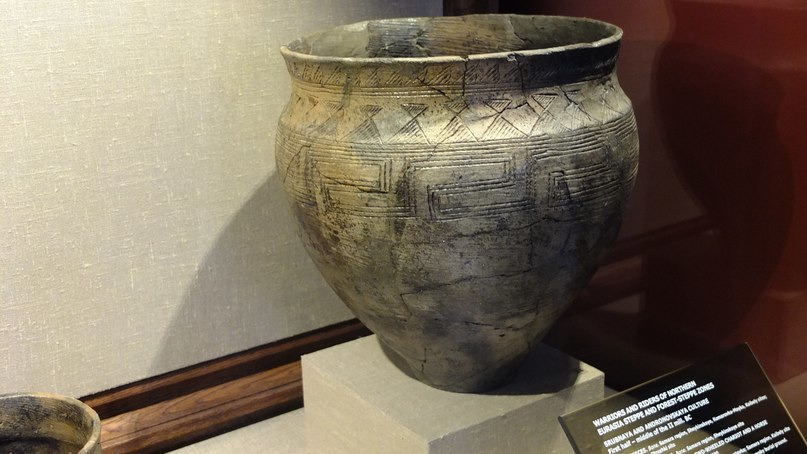
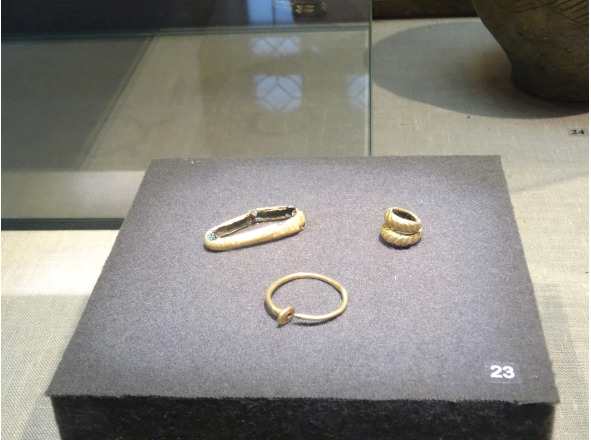
Differences are manifested even in small pointed rib vessels — the presence of a direct fall in the neck region from the inside is especially significant. In the decoration of vessels, meander and lobed patterns are much more often noted, the tradition of decorating their lower part with a drawn vertical herringbone, etc. In the Ural territory, rounded bracelets with non-closed blunt ends, metal overlays, plate plaques are common. The bracelets are spiral, and also from the time of the catacomb culture, temporal lobed rings have been used.
Only here, multi-turn small grooved pendants and metal beads are known. A significant set of metal tools and weapons. The outlined solution to the question of the origin and future fate of the Abashev population is also responsible for the approach to elucidating the ethnic group of this population. The denial of the genetic connection with the Abashevites of the preceding cultures of the Volga forest, as well as the lack of direct inheritance of the Abashev traits by the Finno-Ugric cultures of the early Iron Age of the Volga region, is a serious argument in favor of the denial of the Finno-Ugric ethnic group of the Abashevites. At the same time, the definition of their ethnic group as Indo-Iranian is becoming more and more obvious (for the first time such a point of view was expressed by A. Kh. Khalikov). This interpretation of the ethnic group of the Abashevites receives additional arguments in connection with new arguments in favor of the fact that the Abashevites, with their historical roots, development and further fate, are connected with the world of the masses of the population of the ancient, Srubnaya and Alakul cultural and historical communities, which are now more and more definitely viewed directly connection with the problem of the early history of the Indo-Europeans, and then their group of Indo-Iranian branches.
Andronovo culture
Andronovo culture (cultural-historical community) — the general name of a group of close archaeological cultures of the Bronze Age, covering in the XVII — IX centuries BC. e. Kazakhstan, Western Siberia, the western part of Central Asia, the South Urals, as well as Northwest China, Gansu province (article Bechter A.V., Khavrin S.V. Steppe bronzes from Gansu and Xinjiang Uygur Autonomous Region of China and problems east line synchronization). People of this culture were called, already Huns or Hans, from a totem or a farna, a sacred animal, a gesya-swan. And from here came the name of the Gansi province. Here it is also necessary to recall the discovery of the Tarim mummies belonging to the Andronovo culture, according to the monuments of ceramics. A Swedish archaeologist excavated in 1939. there are almost a dozen mummies and about 200 artifacts. Bergman left a detailed description of his findings in a work entitled “Archaeological Researches in Sinkiang Especially the Lop-nor Region”. By the early 1990s, more than a thousand Nordic mummies had already been discovered in the Chinese province of Wapu, but in 1998 the Chinese government banned further excavations, apparently because of fears that even more striking evidence would be extracted the presence of Caucasians in ancient China. So the researchers in 1980 deep under the “sea of death” found the mummy of a beautiful girl, nicknamed the sleeping beauty Lulan. According to scientists, the remains of 3800 years. One of the famous Tocharian mummies, known as the “beautiful Loulan” and reconstruction. It belongs to a young Caucasian woman (high height 180 cm and strands of blond hair) and was found in 1980 in the vicinity of Loulan. Approximate age 3800 years. And what’s important, the extremely high growth of the dead men is 200cm tall, women 180cm tall.
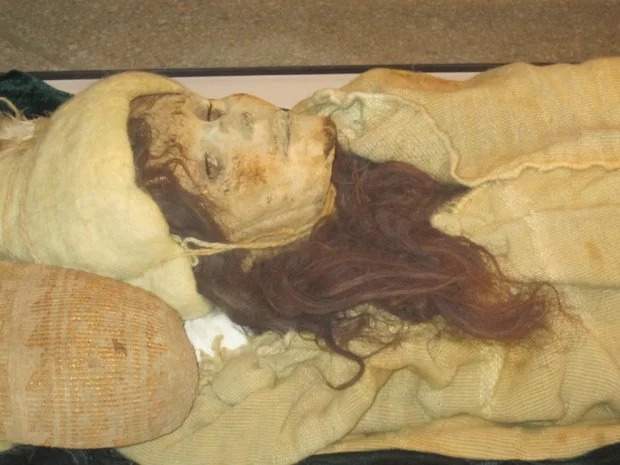
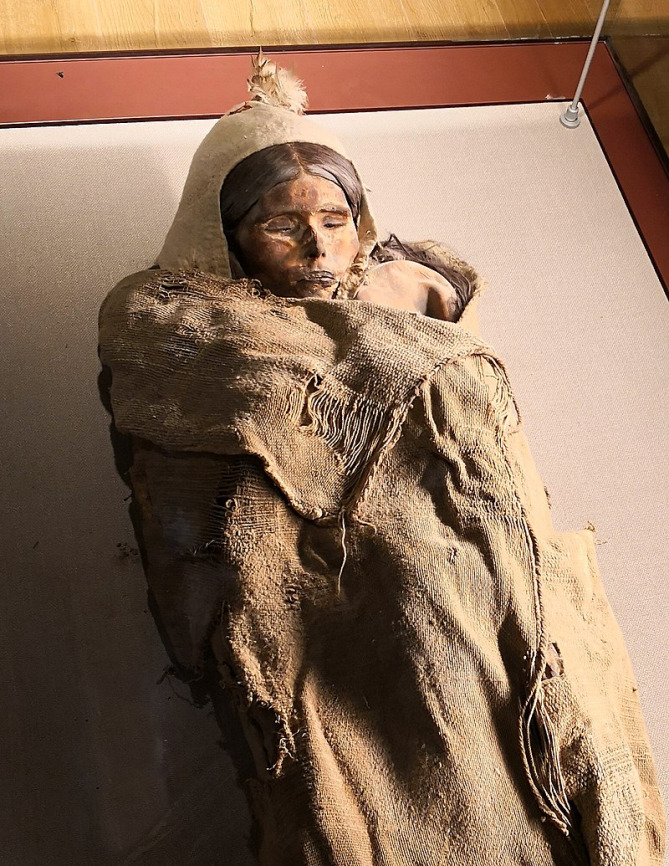
In China, obviously, people of Andronovo culture founded the state of Shang-Yin, here are very interesting preliers in the manufacture of bronze cauldrons of shan-yin and later Sarmatians and Huns. Another interesting find of the Sejm-Turbino era is the scraper knife, in which the handle is parallel to the blade, that is, the blade is inserted into the bone handle with a side edge. The knife was discovered at the Weijiatai Monument, Linxia County, Gansu Province (Tian Souther, 1983, p. 76, Debaine-Francfort 1995, fig. 49.8) The name of the whole culture comes from the village of Andronovo near the city of Achinsk, where in August 1914 A. Ya. Tugarinov discovered the first burial place.
The formation and formation of the Andronovo cultural and historical community took place over several centuries, starting from the turn of the 3rd — 2nd millennium BC. e. Andronovo culture as a single community took shape on the territory of Kazakhstan in the 16th — 15th centuries. BC e.
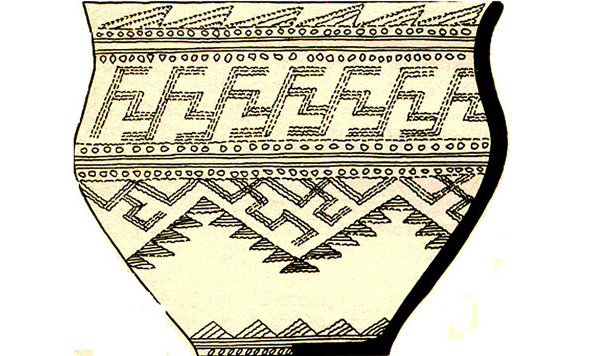
Within this unity, Alakul and Fedorov cultures are formed. Alakulskaya spread in Central and Western Kazakhstan, and Fedorovskaya — in the territory of East Kazakhstan. In Central Kazakhstan and in Semirechye, signs of both cultures are found simultaneously. Subsequently, tribes from Kazakhstan migrated east and south, up to Iran. M.P. Gryaznov singled out the materials of the burial grounds he studied in the river basin. The Urals is the western version of the Andronovo culture which dated to the XIV — XI centuries. BC e. Andronovo culture was highlighted by the Soviet archaeologist S. A. Teploukhov in 1927. Research was also carried out by archaeologist K.V. Salnikov, who in 1948 proposed the first classification of monuments of Andronovo culture. He distinguished three chronological stages: Fedorovsky, Alakulsky and Zamaraevsky.
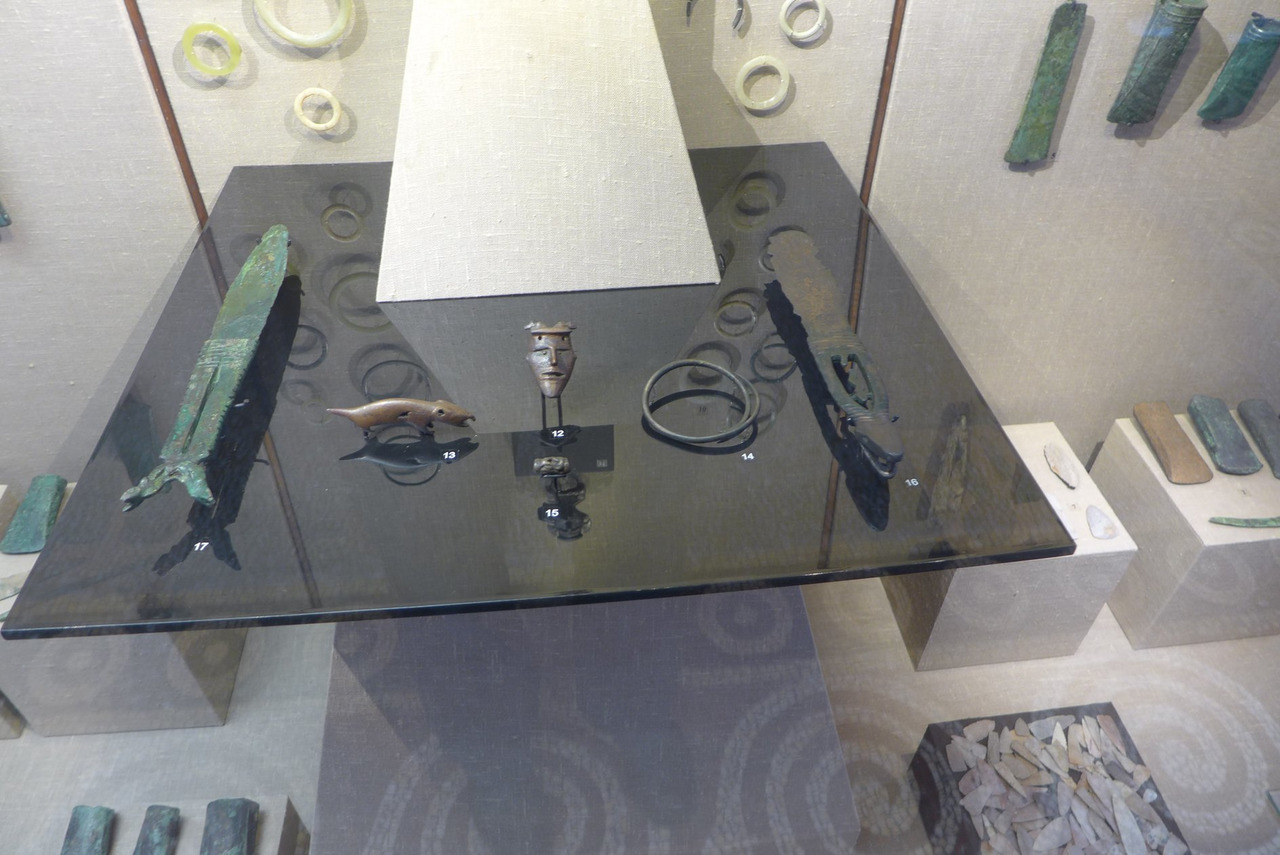
Currently, at least four related cultures are distinguished in the Andronovo culture:
Sintashta-Petrovka-Arkaim (Southern Urals, northern Kazakhstan, 2200—1600 BC,
— This is the fortification of Sintasht in the Chelyabinsk region, dating from 1800 BC. e.,
— Settlement Arkaim, also in the Chelyabinsk region, dating from 1700 BC. e.;
— Alakul (2100—1400 BC), in the area between the Amu Darya and Syr Darya rivers, the Kyzylkum desert;
— Alekseevka (1300—1100 BC) in eastern Kazakhstan, the influence of Namazg-Tepe VI in Turkmenistan
— Ingalskaya valley in the south of the Tyumen region, in which the monuments of Alakul, Fedorov and Sargat cultures successively replace each other
— Fyodorovo (1500–1300 BC) in southern Siberia (cremation and the cult of fire were first encountered);
— Beshkent district — Vakhsh (Tajikistan), 1000—800 BC. e. The spread of Andronovo culture was uneven. In the west, it reached the region of the Urals and the Volga, where it was in contact with the carcass culture. In the east, Andronov’s culture spread to the Minusinsk depression, partially including the territory of the early Afanasyev culture. In the south, separate material monuments were discovered in the area of the mountain systems of Kopetdag (Turkmenistan), Pamir (Tajikistan) and the Tien Shan (Kyrgyzstan), in the area of settlement of Dravidian-speaking tribes. Considering the problems of the history of Andronovo cultural unity in metal products, N.A. Avanesova proposed the following periodization scheme: 1) the pre-Lakul stage (XVII — XVI centuries BC); 2) Andronovo culture (XVI — XII centuries BC);
— Alakul stage (XV — XIV centuries BC);
— Kozhumberdinsky stage (XIV century. BC);
— Fedorovsky stage (XIV — XIII centuries. BC);
— Zamaraevo-Begazinskaya culture (XII — IX centuries. BC. E.) (1979, p. 20—21).
In the late 70’s. OH. Margulan, without changing the sequence of genetic continuity in the development of the tribes of Central Kazakhstan, proposed a new chronological framework for the stages, extending the Nurin stage (synchronous to Fedorov) from the end of III to the beginning of II millennium BC. e., almost 5 centuries; Atasu (synchronous to Alakul) until the 18th century BC e., i.e. for 4 centuries, and the transition period to the Late Bronze Age to the XIII century. BC e., i.e. for one century, leaving the dating of the Begazy-Dandybaev culture as early as the 10th-8th centuries unchanged. BC e.
The northern border of the spread of Andronovo culture coincides with the border of the taiga. In the Volga basin, a noticeable influence of the logging culture is felt. Pottery of the Fedorovo type was discovered in the Volgograd region. The issues of chronology and cultural affiliation of the late bronze monuments of Northern Kazakhstan were developed by S. Ya. Zdanovich, who singled out the Sargarine culture of the final stage of the Bronze Age, dating it to the X — VIII or even IX — VIII centuries. BC e.
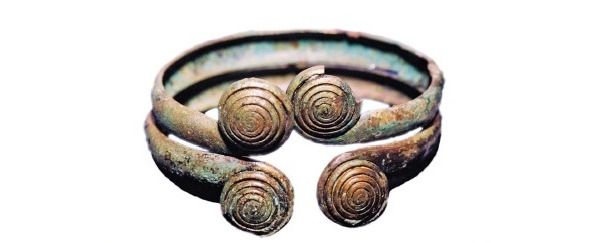
In the Siberian steppes, a common economic and cultural type of shepherds and pastoralists and farmers developed for all Andronovites; Andronovtsy settled down in long-term semi-dugouts. Their villages were located in river valleys rich in pastures and fertile land suitable for agriculture. The herd was dominated by cattle, sheep, horses. Andronovites became the first riders in the Asian steppes. Cattle were kept on pastures for most of the year under the supervision of shepherds, and in winter — in special pens. Cereals were cultivated on lungs to cultivate floodplain lands. The soil was manually cultivated with stone and bronze hoes. Hunting and fishing were not of great importance in economic life. They lived poorly, settled in large families in dugouts, located quite far from each other; many times they created settlements, but chaotic, spontaneous, without a clear plan. Settlements in the form of 10 to 20 large dwellings.
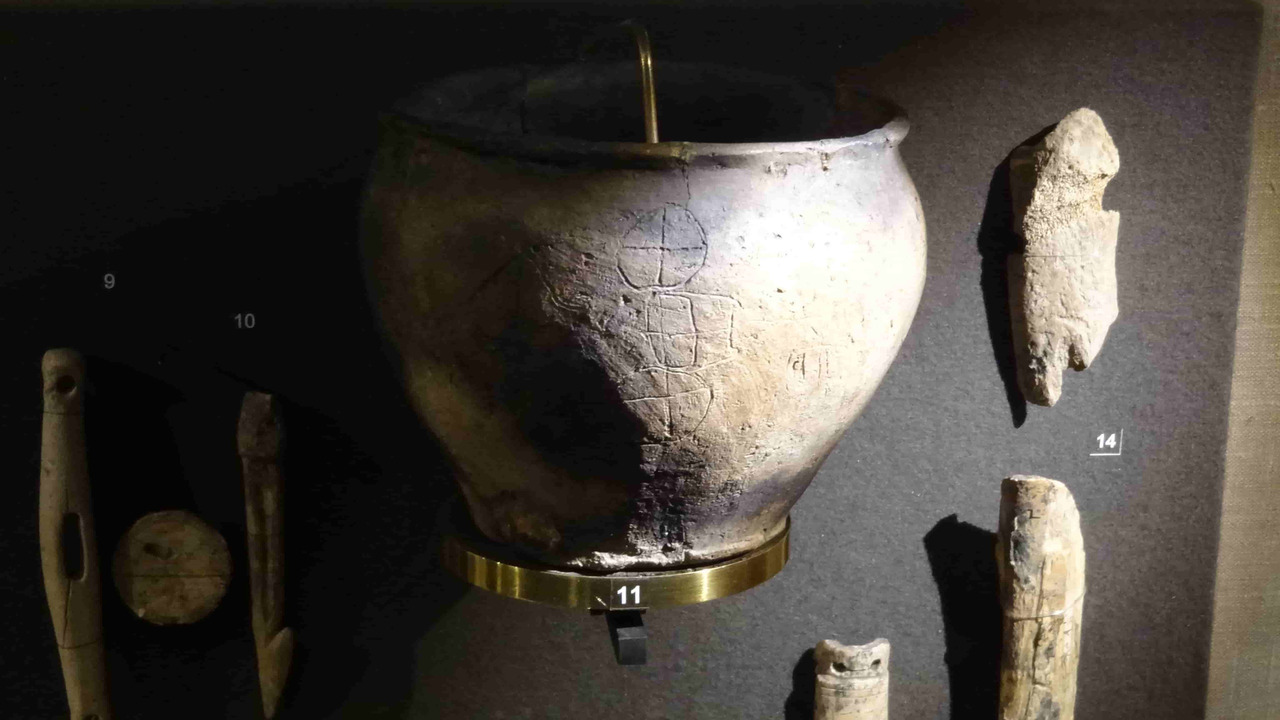
The dwellings were semi-dugouts and ground log cabins. Some settlements (for example, settlements in the Petrovka and Bogolyubovo regions) were surrounded by moats and ramparts, the land for which was taken during a fragment of the moat. A wooden picket fence was built on top of the shafts. For passage inside, jumpers were left in the ditch, and gates were arranged in the shaft for the passage of chariots.
Andronovtsy were tribes of metallurgists. They owned copper and tin mines and delivered metal far to the west. Their casters provided a wide production of tools (sickles, axes, Celts) and weapons (daggers, bushings, spears with a leaf-shaped pen), including outside the Andronovo range. Copper ore deposits were developed in Kazakhstan, as well as in the Altai Mountains. Burials were made in pits with stone embankments, sometimes surrounded by fences made of stone slabs. Burials using wooden cladding are encountered. The dead were laid in a crouched position, hands were laid in front of the face. In the burials find flint arrowheads, bronze tools and weapons, jewelry, ceramics. The deceased was sometimes burned. Vessels with a flat bottom were decorated at the top and at the very bottom with impressions of a thin comb stamp or carved lines, often in the form of a variety of geometric shapes — meanders, triangles, crosses, swastikas and meanders. Of the ornaments, again, spiral bracelets, temporal lobed rings, open bracelets with a volute, figure below.
Бесплатный фрагмент закончился.
Купите книгу, чтобы продолжить чтение.